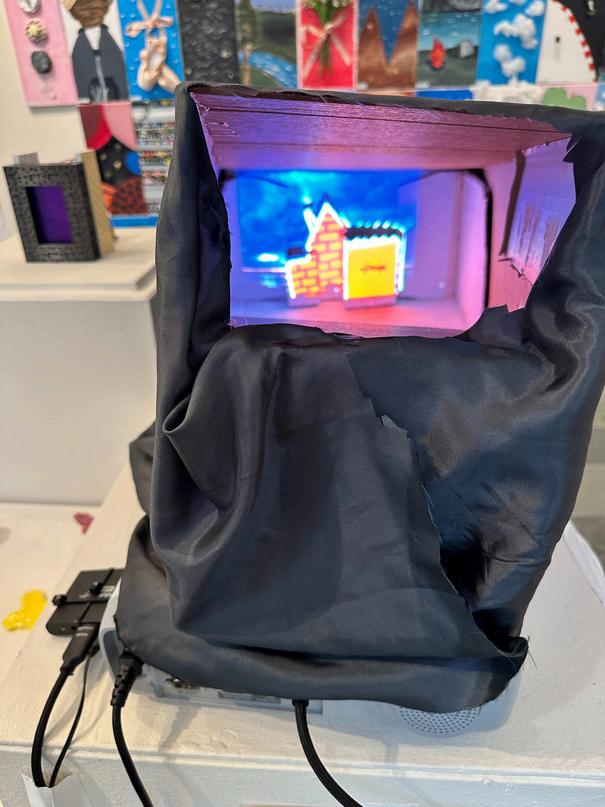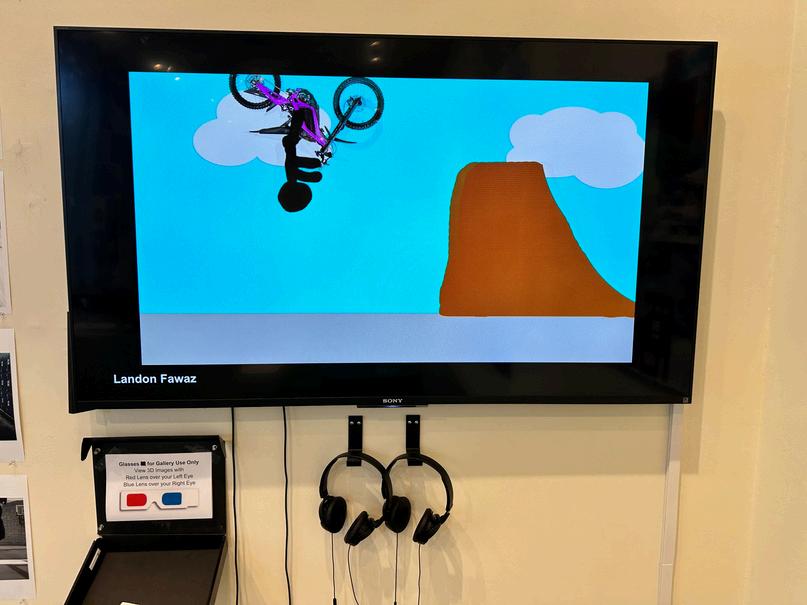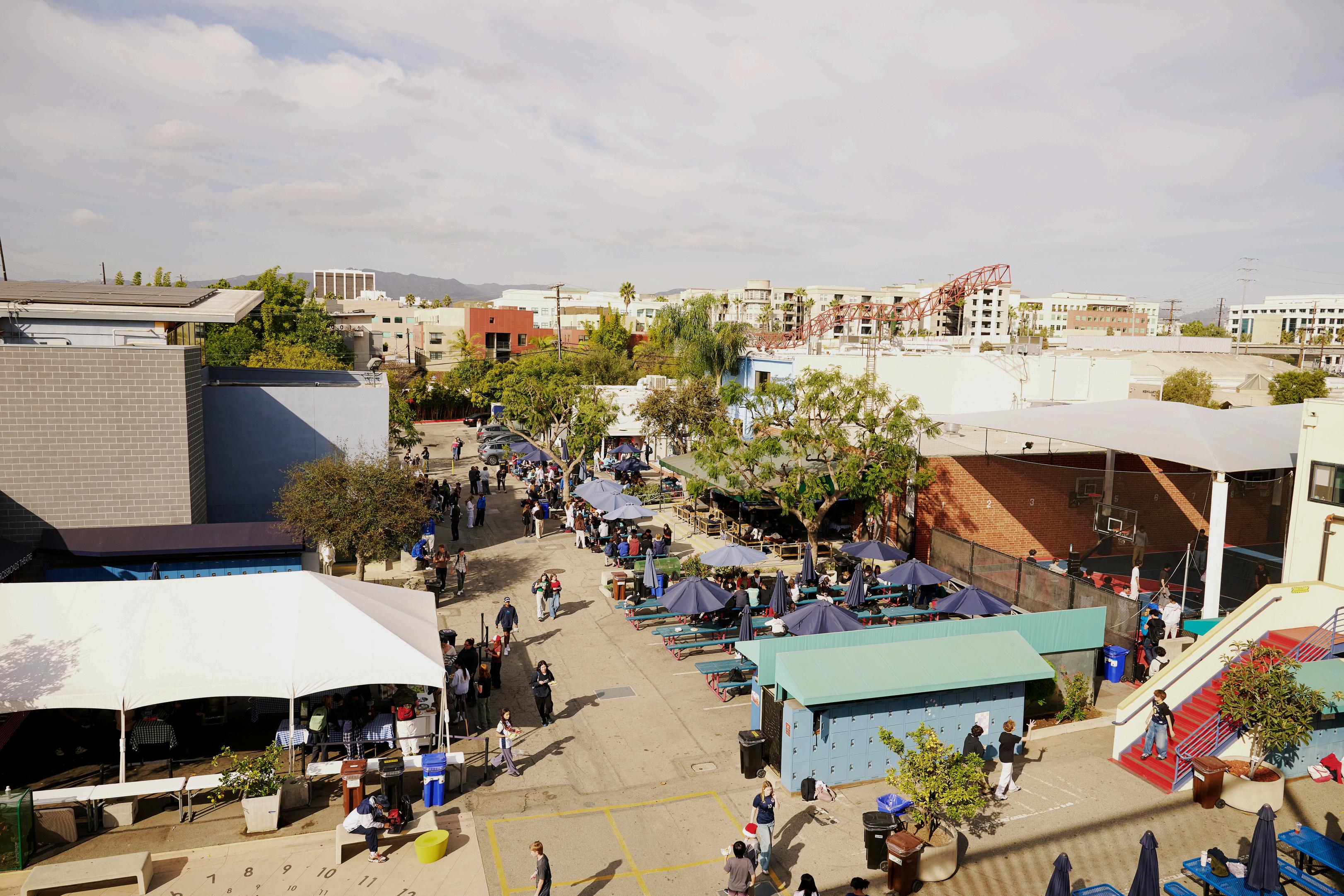The Crossroads Middle School Experience
Crossroads School for Arts & Sciences
Santa Monica, CA
2025-26
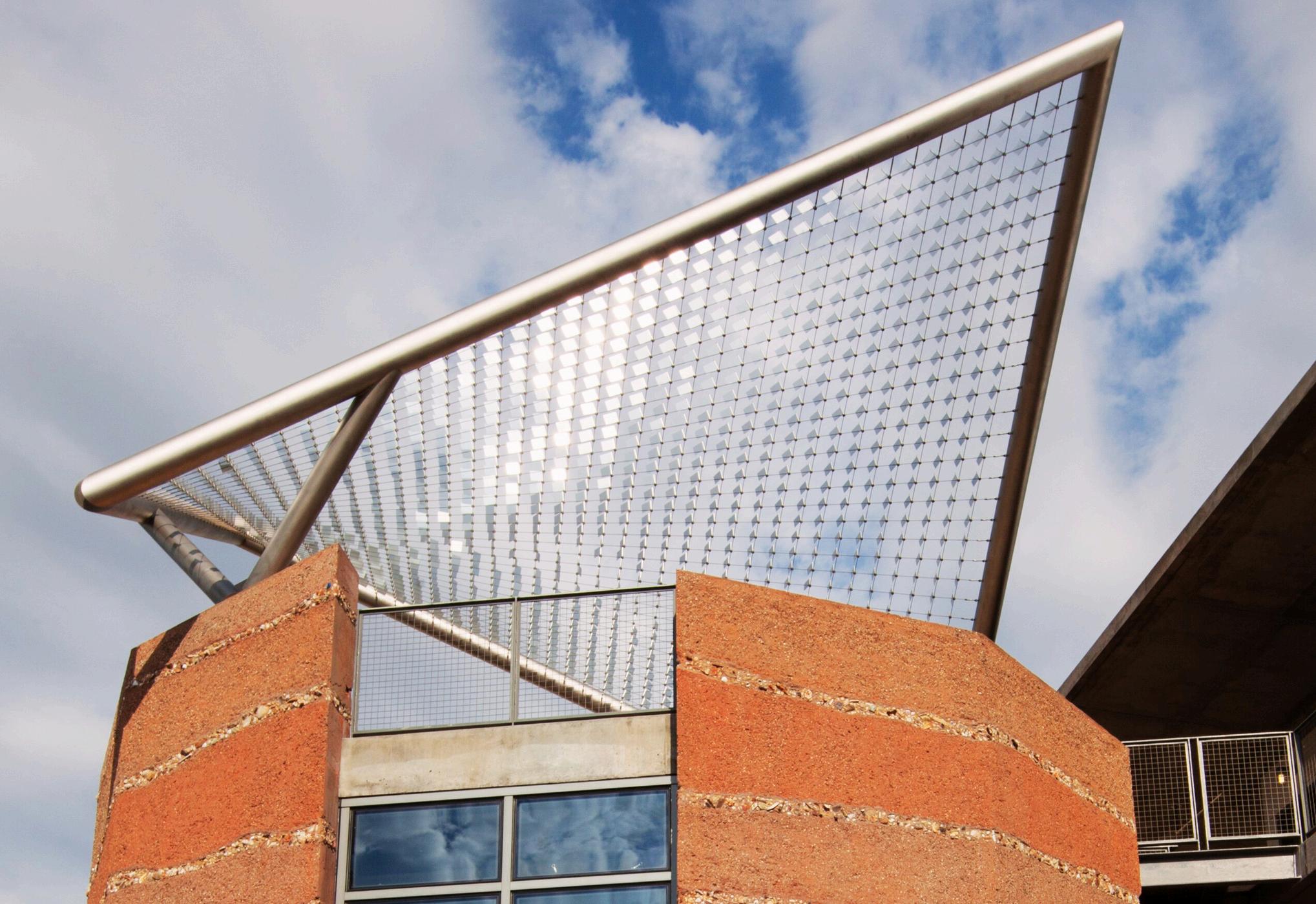

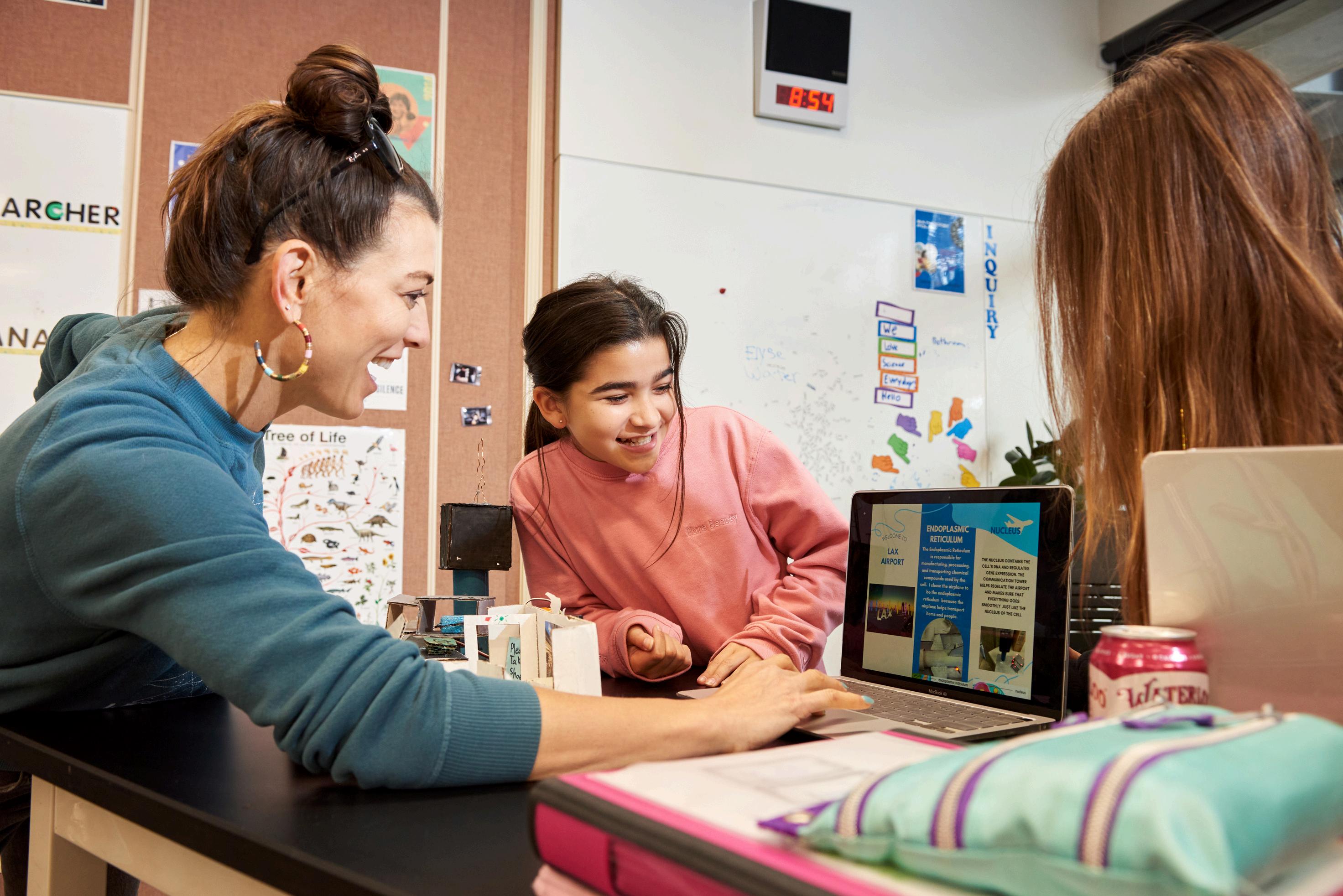

Crossroads School for Arts & Sciences
Santa Monica, CA
2025-26



The Middle School experience is defined by a harmonious balance of guidance and exploration. Our students receive tailored instruction that channels their curiosity into unfamiliar curricular terrain and helps them make informed choices about their own educational pursuits.
Surrounded by adults who understand and value this crucial developmental stage, our students engage in meaningful conversations with teachers, coaches, deans and administrators. Our faculty members are mentors who create an environment for students to work collaboratively, fostering strong relationships.
The Middle School is characterized by exposure to new ideas and the freedom to explore developing interests. Self-advocacy and self-expression flourish as over 80 Electives classes and rotations in PE and the arts introduce new subject matter and inspire students to make educated decisions about their academic and extracurricular pursuits.
Our students joyfully tackle new material while sharpening their critical thinking and problem-solving skills. As they begin appreciating uncertainty, they also start seeking out intellectual complexities on their own by asking thoughtful questions and making connections across disciplines.
REQUIREMENTS
Central Classes
CORE: A combination of English, history and social studies
MATHEMATICS: Placement determined by the department
SCIENCE: A spiral curriculum of recurring concepts in the fields of physical, biological and earth sciences
ARTS: Six courses taken over the course of one full year, including Chorus, World Music, Dance, Painting & Drawing, Drama and Mixed Media
WORLD LANGUAGES: Spanish
SERVICE LEARNING: Completion of one project centered around “Acts of Kindness”
LIFE SKILLS: Social and emotional development program
PHYSICAL EDUCATION: Functional movements and cooperative games
REQUIREMENTS
Central Classes
CORE: A combination of English, history and social studies
MATHEMATICS: Placement determined by the department
SCIENCE: A spiral curriculum of recurring concepts in the fields of physical, biological and earth sciences
ARTS: Five courses taken over the course of one full year, including including Understanding Music, Music Listening, Dance, Drama and Studio Art
WORLD LANGUAGES: Spanish, Latin, French or Mandarin
SERVICE LEARNING: Environmental and climate change initiatives
LIFE SKILLS: Social and emotional development program
PHYSICAL EDUCATION: Skill development and team games
REQUIREMENTS
Central Classes
CORE: A combination of English, history and social studies
MATHEMATICS: Placement determined by the department
SCIENCE: A spiral curriculum of recurring concepts in the fields of physical, biological and earth sciences
ARTS: Two semester-long courses and one half-block, full-year course (student choice). Courses to choose from are Ceramics, Film Studies, Photography, Studio Art, Video Production, Yearbook, Electronic Music, Drama, Digital Art & Animation, Tech Theater, Robotics & Art, Jazz Collective, Contemporary Art, Orchestra
WORLD LANGUAGES: Spanish, Latin, French or Mandarin
SERVICE LEARNING: Completion of one project centered around “How To Do Good For the Community”
LIFE SKILLS: Social and emotional development program
PHYSICAL EDUCATION: Team sports and fitness
Students can take up to four electives over the course of a single school year. Elective courses change; please see examples of past offerings below.
Ancient STEAM
Art History
ArtsMASH
Art Studio
Backgammon & Dominoes
Band (varying levels)
Beyond High School
Beyond Recess
Board Games & Game Design
Bullet Journaling
Card Strategies
Casino Games
Ceramics
Certamen
Chess Club
Debate Club
Double Dutch
Free Dance
French (full block)
Food in LA
Fundamentals of Fitness
Garden to Table
LA Art & Architecture
Make Time
Making & Breaking Codes
Middle School Dance Company
Middle School Orchestra
Middle School Zine
Music Production 101
New School DJ
Old School DJ
Overtones
Paper Folding
Paper to Celluloid
Passion Project
Pen to Print to Podcast
Photoshop
Pool Games and Swimming
Robotics
Romeo & Juliet
Science Fiction
Sewing Circle
Soccer & Field Play
Spanish (full block)
Stitches - Beginners Knitting
Strength & Conditioning
Survivor
Workout
Co-ed Cross Country
Co-ed Flag Football
Co-ed Swimming
Girls’ Tennis
Girls’ Volleyball
Boys’ Basketball
Girls’ Basketball
Boys’ Socceer
Girls’ Soccer
Baseball
Boys’ Tennis
Boys’ Volleyball
Co-ed Golf
Co-ed Track & Field
Softball
We also offer winter swimming and tennis as noncompetitive options.
EMMI (Elizabeth Mandell Music Institute)
The EMMI program is a progressive, audition-based classical music conservatory within Crossroads School. The program is open to Middle and Upper School students with the ambition, talent and discipline to pursue music at the highest level.
This specialized program is unparalleled within a school setting and includes numerous performing opportunities as soloists, chamber musicians and in our award-winning EMMI Chamber Orchestra.
Care and concern for the ecology of the Earth is an essential component of the Crossroads philosophy. Awareness begins in kindergarten, where “ no waste” lunches are emphasized and gardening is a weekly process. Students begin participating in the Experiential and Outdoor Education program (EOE) beginning in fourth grade. As students progress through the EOE program, they gain technical skills such as kayaking, camping, skiing and rock climbing and study marine life, desert biomes and the impact of human activity on the environment. Equipped with this knowledge, our students are well-positioned to make intelligent and responsible decisions about the world they will soon inherit.
Sixth graders head to Yosemite National Park for a three-day hiking and camping trip that introduces them to the wonders of the Sierra Nevada and builds foundational outdoor skills.
Seventh graders experience the marine environment at Morro Bay, observing the impact of human activity on the estuary and studying the ecosystem directly while kayaking, tide pooling and hiking.
Eighth graders hone their outdoor skills through a series of adventures offered throughout the year, choosing from options such as rock climbing, snowshoeingand island camping.
The Middle School mathematics curriculum builds on Elementary School mathematics skills to prepare students for high school-level mathematics courses. We aim for students to love the process of learning, while developing confidence with number manipulation and application of content knowledge to real-world examples. We utilize a spiral curriculum of concepts: Students build on previous knowledge as they are reintroduced to major concepts with increased complexity.
Students learn math concepts through a problem-based, task-oriented and logical approach. To fully develop a solid understanding of the material, students must consistently practice skills so they can apply either knowledge in a myriad of situations.
We emphasize active student participation. Students are encouraged to communicate and collaborate as they explain their understanding, reasoning and solutions. Various strategies and styles, including hands-on learning through manipulatives, projects, integration of technology and independent and collaborative practices, make our program unique.
Furthermore, we differentiate our instruction and assessments so that students are appropriately challenged and/or supported so they can learn, grow and achieve their individual math goals.
FOUNDATIONS OF ALGEBRA

PRE-ALGEBRA
ALGEBRA 1
ESSENTIALS
FOUNDATIONS OF ALGEBRA ENRICHED
PRE-ALGEBRA ENRICHED

GEOMETRY
Foundations of Algebra is the first class in our Middle School curriculum, creating a solid foundation through a final year of arithmetic practice It includes operations with integers, fractions, decimals and percentages. Equations, expressions and problem-solving skills are developed through geometry and real-world situations. The We Rest Our Suitcase Project uses ratios and unit rate to determine whether flying or driving to a destination is more economical. Teachers introduce students to the wonderful world of variables through algebraic expressions and equations. Finally, students explore graphing on a coordinate plane and the relationship between independent and dependent variables and data
To find success in this class, students should already have a good understanding of the order of operations and operations of positive numbers, including adding and subtracting fractions and mixed numbers as well as multiplying and dividing multi-digit numbers. Note-taking skills are important and will continue to be developed in the class. Lastly, students should complete homework assignments in a timely manner and come prepared for class
Students who complete this course will have a good understanding of the operations of all integers. They will be able to manipulate numbers from decimals and fractions to percents. They will be able to write and simplify algebraic expressions, solve one step equations, check solutions, combine like terms, distribute graph points and find distances of vertical and horizontal lines on a coordinate plane
Students apply math skills to real-world situations to reinforce concepts learned in class and practice organizing more complex problems. In the Personal Budget Project, students explore ratios, proportions, percentages and predict the monetary implications of their career choice and budgeting decisions. In the Graphing Project, students model line segments to create pieces of art, reinforcing their understanding of the coordinate graph and combining their visual observations with number sense. Students continue to develop their equation-solving abilities through exposure to a variety of linear and proportional equations.
To find success in this class, students should already have a strong sense of integer operations and order of operations and be comfortable with the basic operations involving fractions and decimals. They should be familiar with how to simplify algebraic expressions, combine like terms and distribute, solve one-step equations locate points on a coordinate plane.
Students who complete this course will have a strong understanding of integer operations and order of operations. They will be able to solve multi-step equations, graph points and lines on a graph and use formulas to find the areas of compound shapes. They will be able to calculate percentages in a variety of different ways and apply this knowledge to real-world problems.
Algebra 1 is a full-year study of algebra, promoting a strong understanding of multi-step equations, writing and graphing linear equations, solving systems of equations, exponents, quadratics, radicals, and operations of monomials and polynomials. Analyzing information, determining importance, synthesizing skills from their pool of knowledge and abstract thinking are encouraged so that students become more efficient problem solvers. Much of the curriculum is based upon practical application and is in preparation for Upper School math classes. The Middle School Math and Science Departments collaborate on an annual Magic Mountain field trip, through which students make interdisciplinary connections on matters including velocity, acceleration and trigonometry.
To find success in this class, students should have a solid understanding of all integer operations, including decimals, fractions and percentages. They should be able to write and simplify algebraic expressions, solve multistep equations and graph points and lines on a coordinate plane.
Students who complete this course will be able to solve complex multi-step equations, system of equations, quadratic equations and inequalities. Students will comprehend operations of exponents, writing and graphing linear equations, and simplifying and solving radicals. They will be able to analyze information and apply abstract thinking when problem solving.
This course builds on the foundations of Algebra 1 while introducing students to the study of geometry and trigonometry. Students will deepen their algebraic reasoning through work with polynomials, functions, equations, inequalities and problem-solving applications. At the same time, they will explore geometric relationships involving lines, angles, triangles, circles and threedimensional figures, with an emphasis on congruence, similarity, measurement and reasoning The course also introduces trigonometric functions, special right triangles and applications such as angles of elevation and depression. Through this integrated approach, students strengthen both their algebraic and spatial reasoning while building a broad and connected understanding of mathematics.
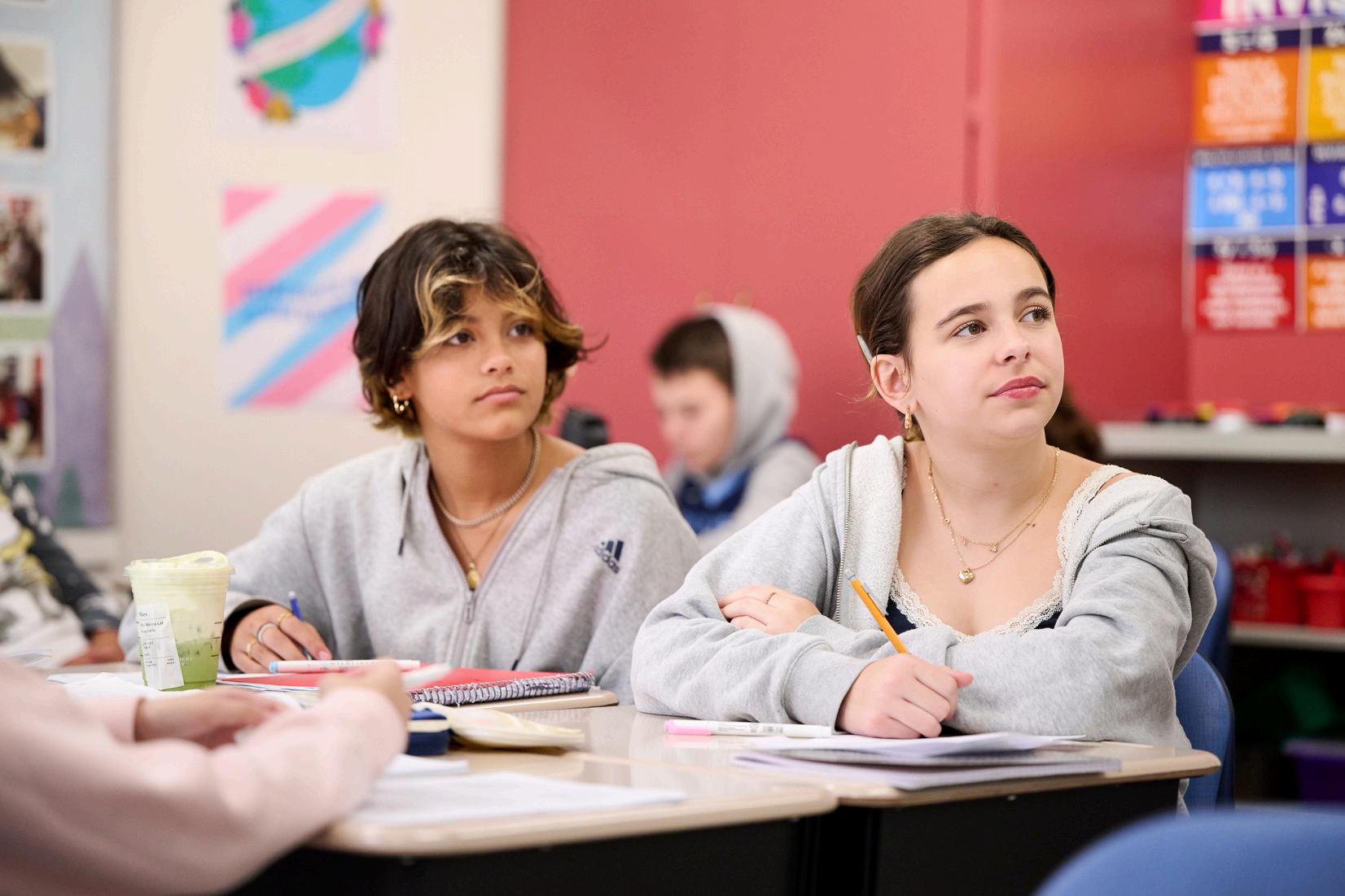


The Middle School science curriculum offers an experiential, hands-on learning environment in which students apply the scientific method and engineering design process to reinforce concepts.
Middle School science classes help students develop the necessary science-process skills to interpret, inquire and comprehend the world around them. Students foster their curiosity, apply scientific methodology, think critically and develop scientific literacy.
Through the practice of running controlled experiments, students learn to make observations, analyze data and draw logical conclusions regarding the relationships between independent and dependent variables.
Through the science curriculum, students gain respect for scientific processes and the environment, and demonstrate their knowledge and passion with the greater community.
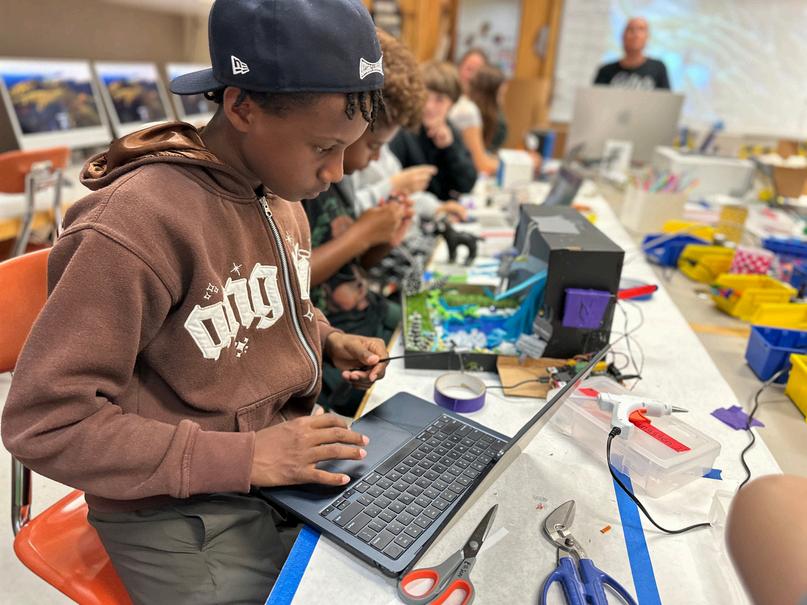
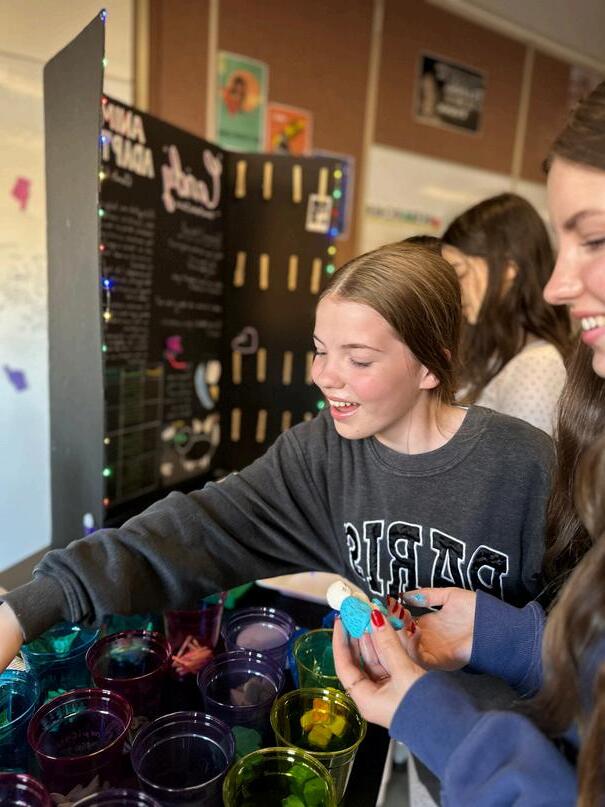
Sixth grade science covers a breadth of scientific concepts. Teachers guide students in their exploration of the history of scientific thought and what it means to create testable questions and thoroughly investigate ideas. Students implement the scientific method while practicing lab writing skills. Students learn how to collect and analyze data using the metric system and how to use graphs and charts to effectively communicate information.
As the year progresses, students continue to develop these skills while learning about chemistry, circuitry, Earth science, cell biology, genetics and evolution. Sixth grade scientists will end the year having improved their collaboration, research and communication skills, and have an appreciation for history on a grander time scale and an interest in our planet and universe.
Students continue to utilize the scientific method and hone their science-process skills while studying climate science, ecology, reproduction and forensics. Students participate in multiple projects and experiments throughout the year that enhance their understanding of the material.
Students should possess a basic understanding of the scientific method and a willingness to work at improving their critical thinking and problem-solving skills Students leave the class with a deeper understanding of many different fields of science and will know how to support their claims with evidence and data. Students should be able to competently write hypotheses in the instructed “If…, then… because…” format; collect, graph and analyze data; draw conclusions based on results; and effectively communicate their findings with others.
Students delve deeper into topics such as chemistry, astronomy, physics and the science of well-being with hands-on labs and projects Students hold curiosity, empathy and scientific methodology as their guiding principles throughout the class. Knowledge of the scientific method is expected, as well as an openness to improving one ’ s abilities in areas of teamwork, leadership and deductive reasoning.
Eighth graders sharpen their observational skills by taking careful and detailed notes of the phenomena they witness in labs. They then practice analyzing data to lead them to evidencebased conclusions.
To prepare students for high school and beyond, teachers place a greater emphasis on self-reliance this year. Students are encouraged to make their own decisions about their approach to a lab, problem or assignment. They are also encouraged to reflect on their choices and use their findings to optimize for the future.
The Middle School Core program combines language arts, history, and social studies into one double-period class that integrates knowledge and ideas across key disciplines and subject areas.
The curriculum covers premodern belief systems and migration in sixth grade, American studies in seventh grade and human rights in the modern world in eighth grade. Students read fiction, literary nonfiction and history of increasing sophistication, building a global cultural awareness and comprehension of challenging texts.
Creative and analytical writing assignments teach students to communicate effectively and reason soundly. Student-led projects including graphic narratives, mock trials and formal debates cultivate engagement.
Through the combined study of literature and history, students develop the knowledge and reading, writing and critical thinking skills necessary to succeed
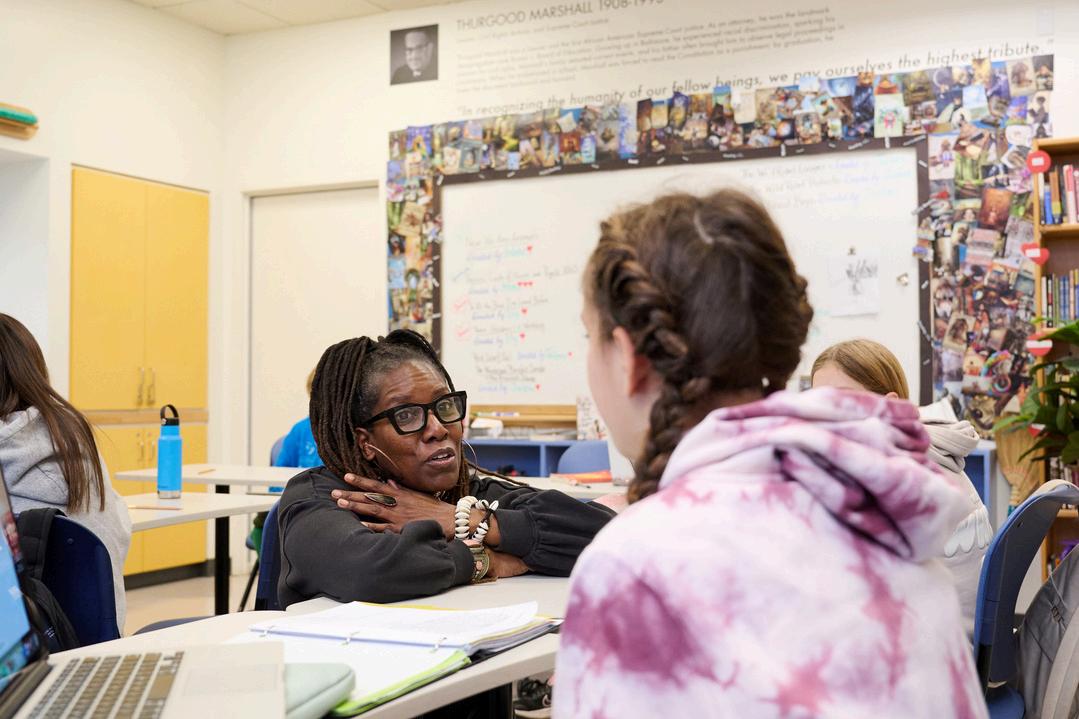
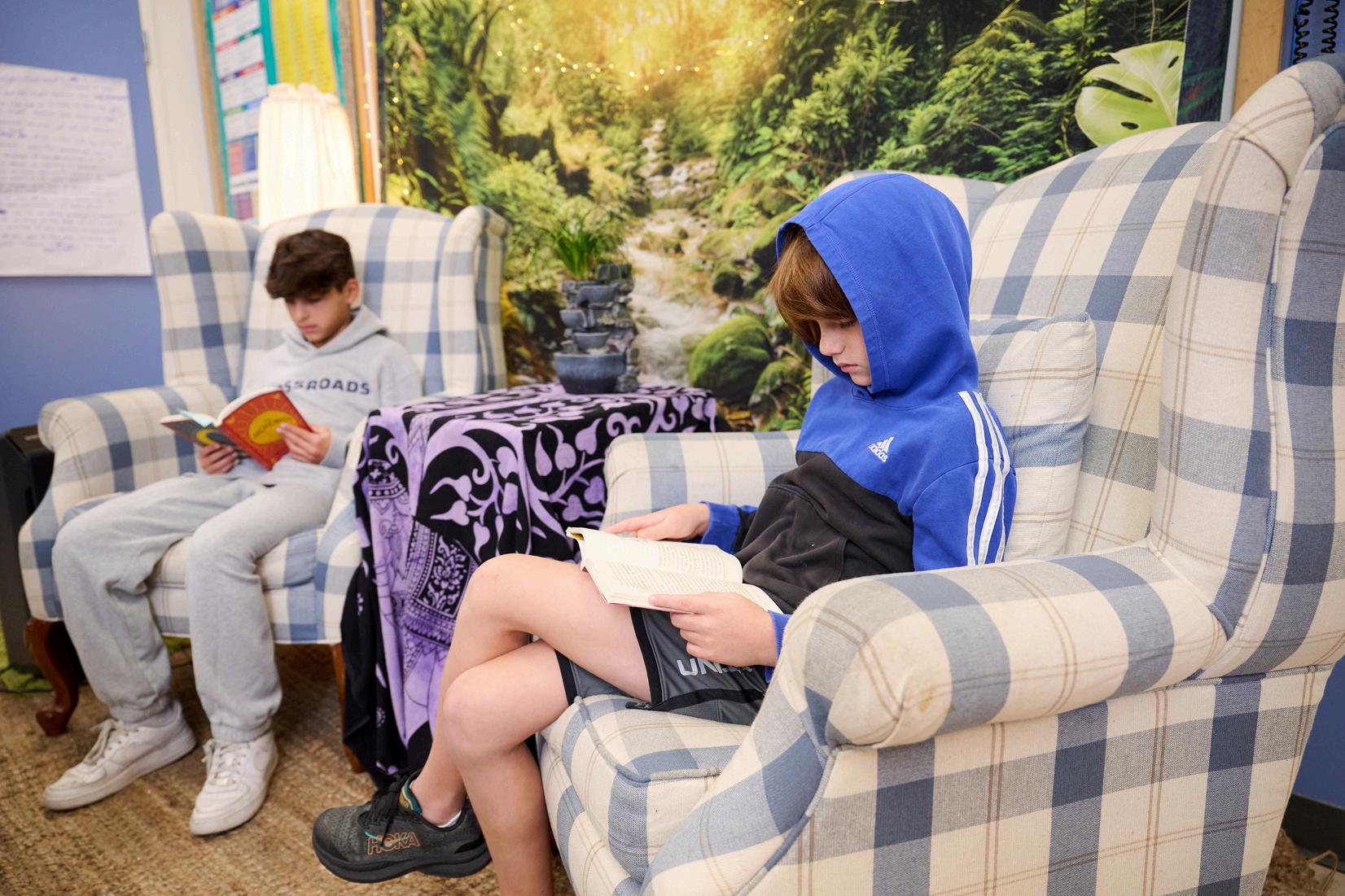
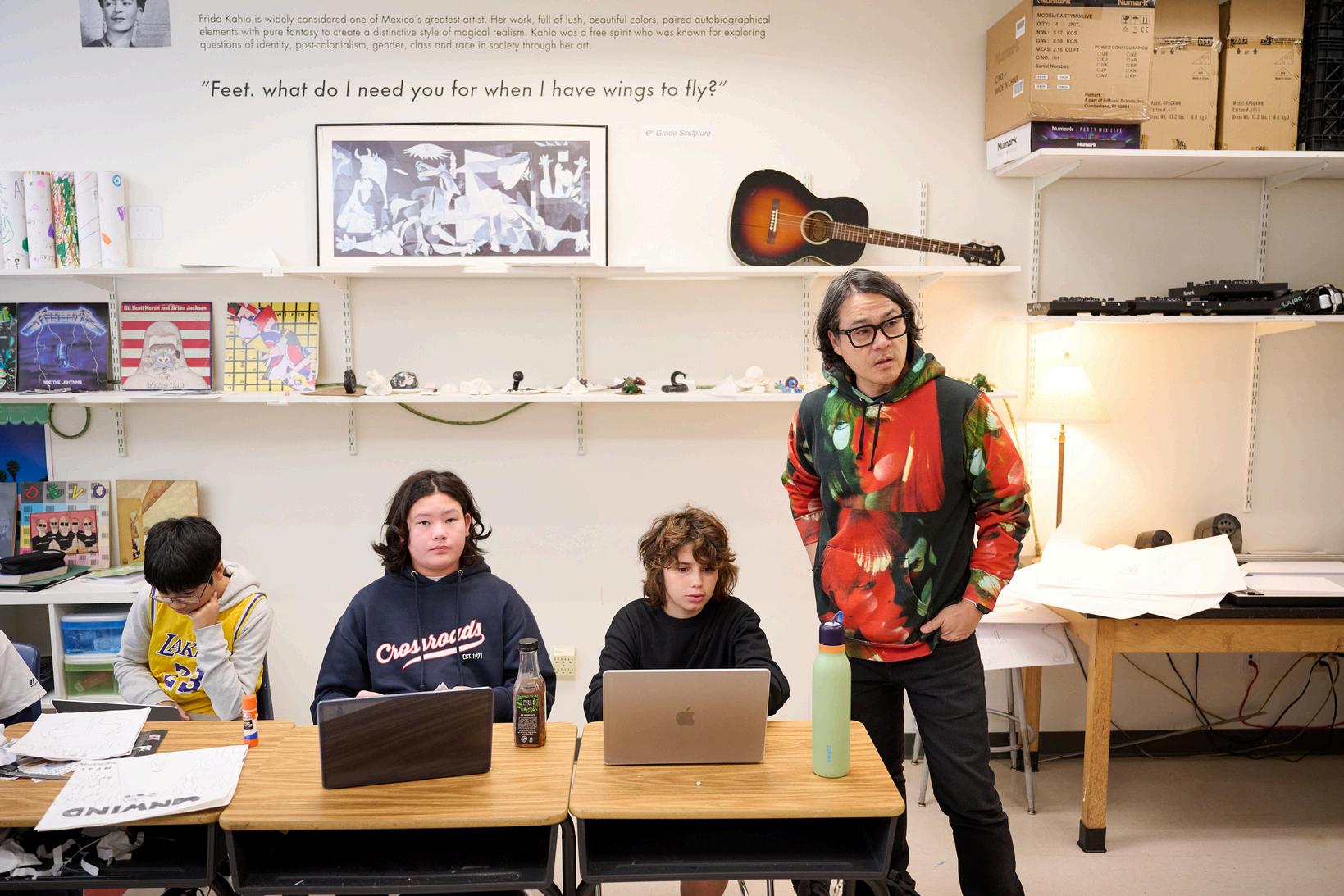
Core 6 focuses on belief systems and storytelling traditions in the premodern world. Teachers pose essential questions including: How does geography relate to history? How do language and art develop? And how can we form understanding across differences in belief? Students examine historical fiction and myths from Africa, Asia and Europe and make connections across cultures. Students learn grammar, mechanics and how to analyze literature and historical sources by developing unified body paragraphs supported by evidence. Expressive capacities are developed through regular journaling and creative writing assignments.
Core 7 is focused on American studies. The yearlong questions students contemplate are: What is American identity? What are American stories? And what is justice? Story plays a vital role in learning about the past and understanding who we are as individuals and as a country. By studying the author’s craft, students practice creative and analytical writing skills and mechanics. Teachers lead class discussions around socioeconomic class and race as sources of both personal and cultural identity. Students explore American identity and history through stories told from diverse perspectives.
Core 8 explores the concept and history of human rights in the 20th and 21st centuries. Students study the history of the United Nations, civil rights and liberties, migration stories and current events in depth while practicing creative and analytical writing Essential questions include: How do great writers use a variety of literary strategies to engage readers? How can Universal Human Rights and the United Nations Sustainable Development Goals impact people’s lives? And what is the meaning of justice, equity, inclusion and activism in the United States? The year culminates with in-class debates that hone skills in research, argumentation and public speaking.
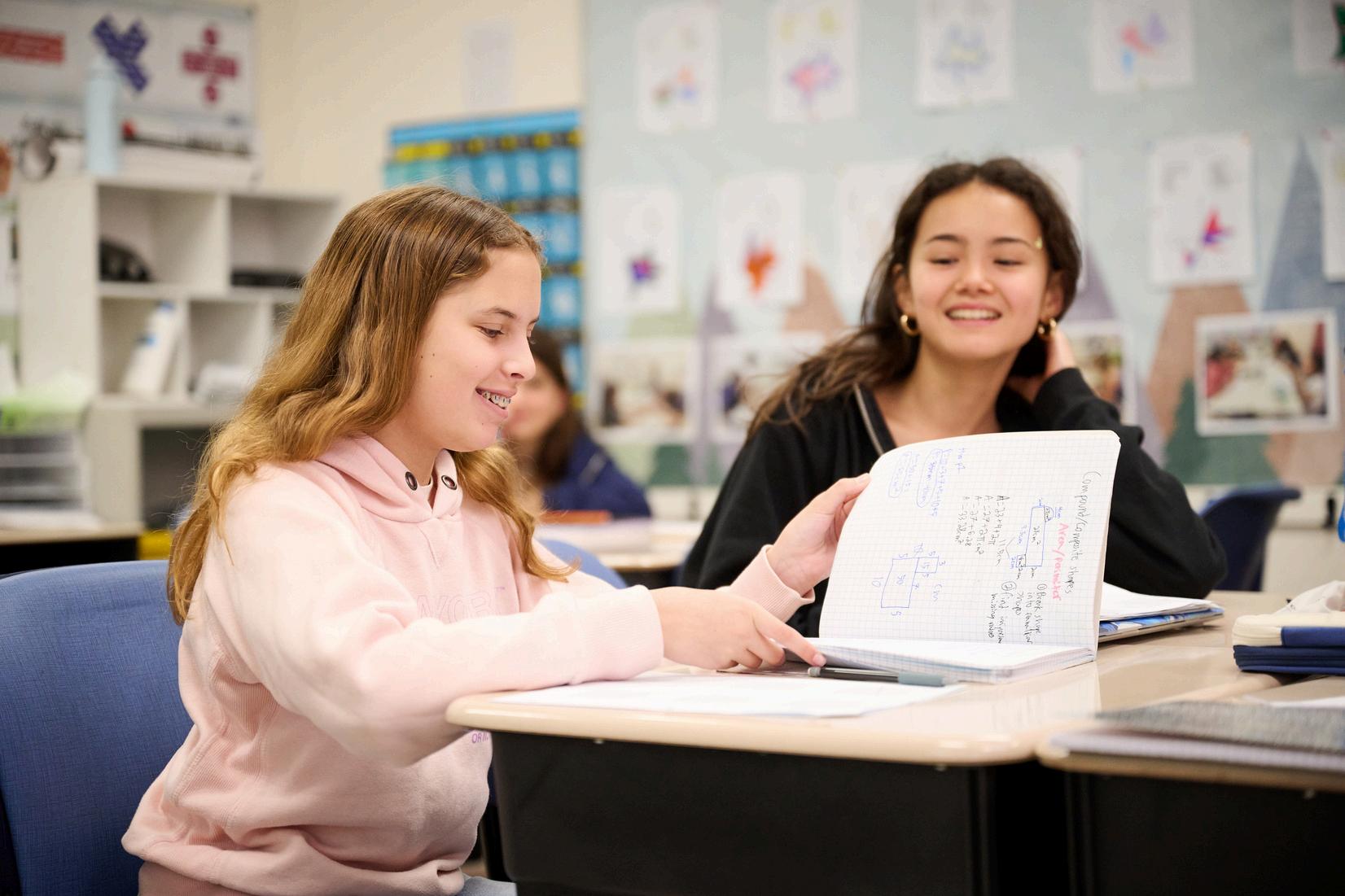
The Latin curriculum centers on fostering a deep appreciation for the language, culture and history of the ancient world through which students gain valuable skills and perspectives that extend beyond the classroom.
Latin provides an inclusive and supportive learning environment where students feel motivated to explore the intricacies of language without fear of judgment. By nurturing a sense of curiosity and enthusiasm, Latin prioritizes active learning and student-centered approaches, including a variety of instructional methods such as group discussions, collaborative projects and interactive activities.
Latin caters to diverse learning styles and interests, which instill in students a sense of ownership and accountability. Through exploring the connections between Latin and other subjects such as Core, the arts, math, science, physical education and modern languages, students gain a deeper understanding of the broader cultural context in which Latin continues to influence our world today.

Students read novellas that serve as comprehensive tools introducing vocabulary, grammar and the geographical context of the ancient Mediterranean, as well as the Middle East and Africa Additionally, classes dive into Greco-Roman mythology, daily life and history through various activities such as the Myth Myxer, crafting bulla/lunula charms, the Getty Villa field trip and the Minecraft Villa project.
Teachers provide students with opportunities to engage in diverse projects spanning art, mythology, etymology, Roman history, social justice and advancements in science and technology
Students are encouraged to draw connections between topics explored in Latin class and those encountered in other disciplines. Students can showcase their language proficiency and creativity on a wider stage by participating in state- and national-level events supported by the Junior Classical League.
Students continue their study of Latin through the “Suburani” text, set in ancient Rome and Britain Eighth grade Latin builds upon the foundation laid in seventh grade. It encompasses various activities such as reading Latin texts, studying Latin grammar alongside English grammar for comparison and revisiting Latin vocabulary while exploring its derivatives in English and other languages.
Students dive into Roman culture through the Latin literature and archaeological evidence like graffiti, and discuss Greco-Roman mythology and the pantheon of deities worshiped across the Mediterranean, including the Middle East and Africa. Building on the themes introduced in Latin 7, students further explore diverse projects spanning art, mythology, etymology, Roman history, social justice and advancements in science and technology. Students continue to draw connections between topics explored in Latin class and those encountered in other disciplines and can showcase their proficiency on a wider stage by participating in state and national level events supported by the Junior Classical League.
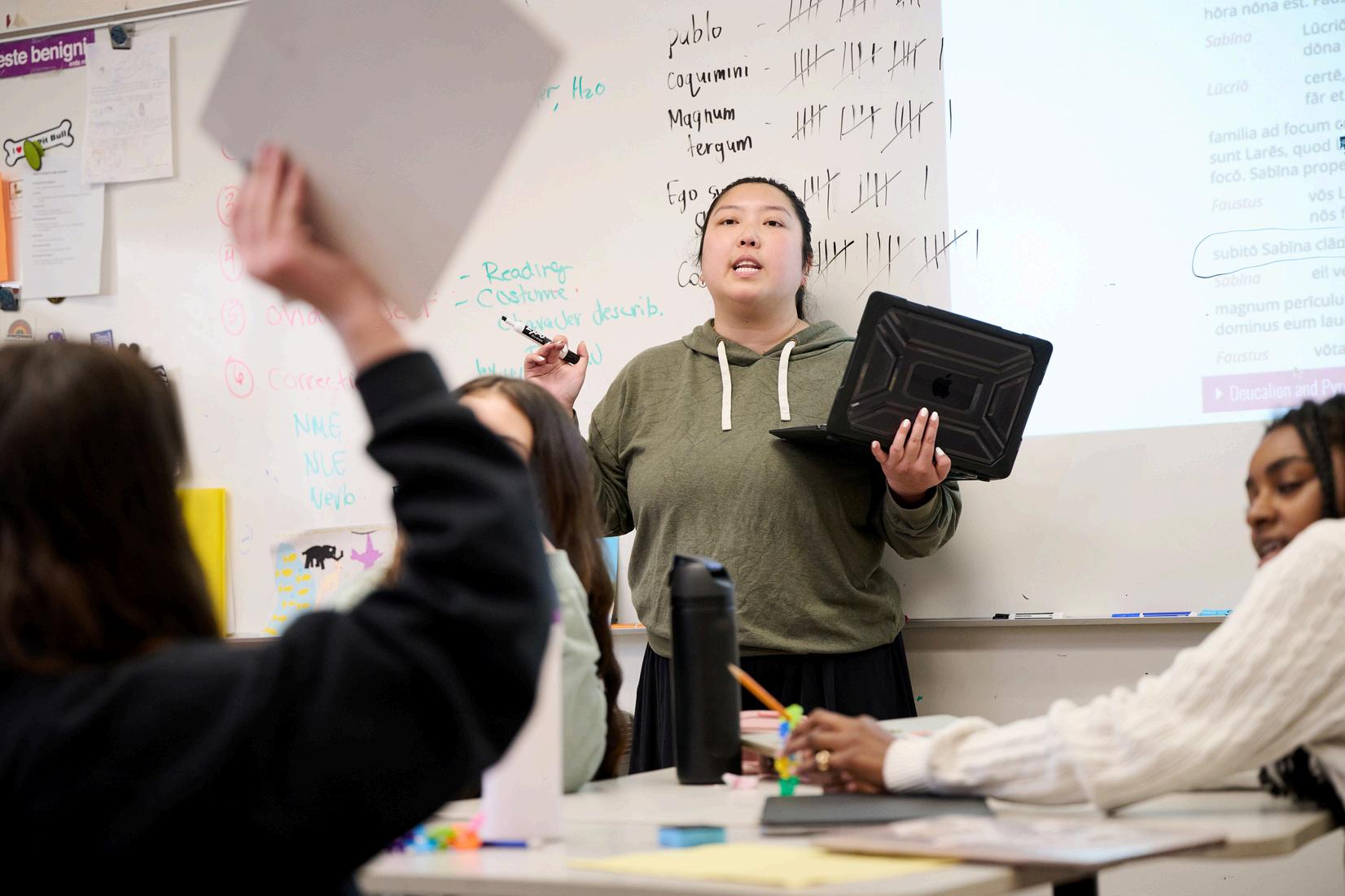
Learning Spanish is about acquiring a new language and embracing the rich diversity, vibrant history and dynamic cultures of the Spanish-speaking world. Our Spanish program is designed to be highly interactive, proficiency-based and centered on student engagement. Students prepare for future success in high school and beyond, participating in a classroom environment where curiosity thrives and mistakes are embraced as part of the learning journey. Through collaborative projects, group work and presentations, students dive into authentic materials music, readings, videos and social media enhancing their comprehension and appreciation for the language. In all Spanish courses, teachers provide Socratic instruction, and students engage in activities such as student-led group discussions, presentations and mini-projects.
Living in Los Angeles, a city where 49% of the population identifies as Latino/x, students find their language skills relevant and powerful. A unique aspect of our program is the opportunity for students to apply what they've learned in realworld contexts through service learning opportunities, allowing them to make meaningful connections with the greater community. Language learning becomes a bridge for students to understand themselves and others, empowering them to engage with the world in meaningful ways.
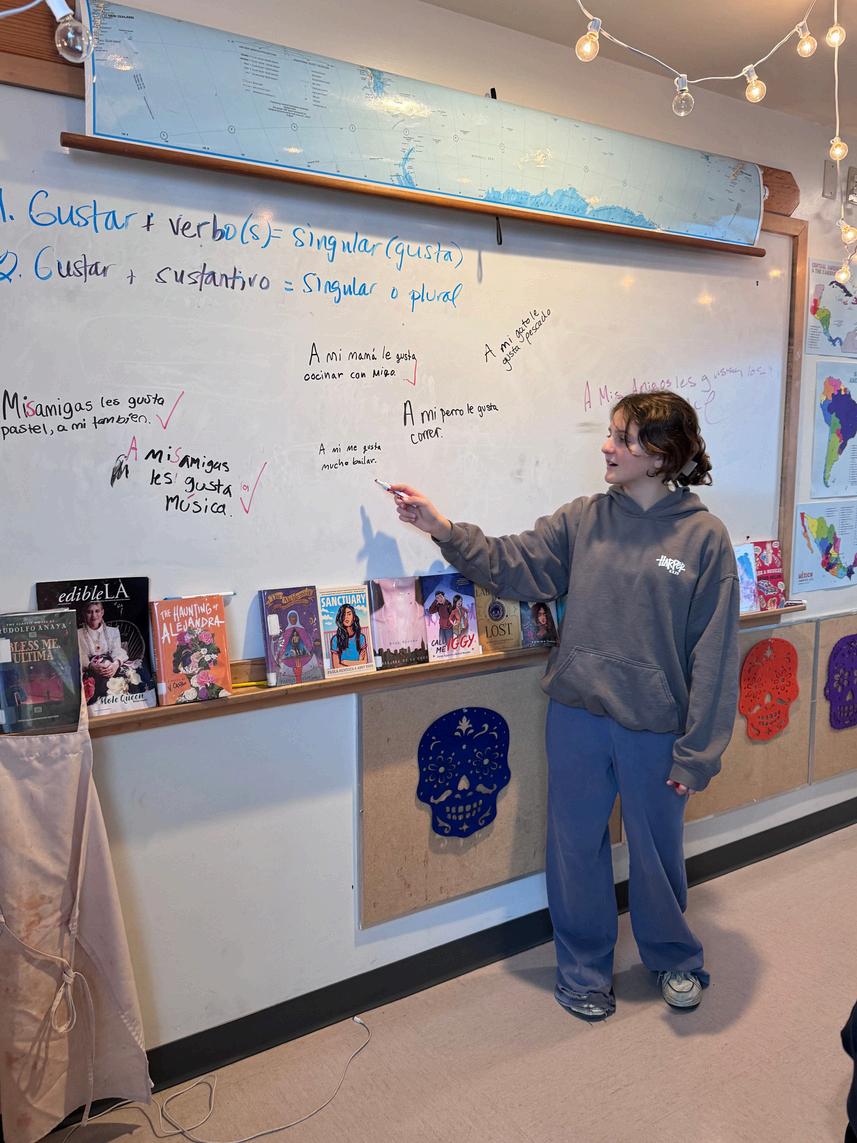
As context for their studies, teachers invite students to delve into the history of the Spanish language and where it is spoken. Projects such as poster-making and mini museums center on celebrating culture and demonstrating language mastery. By the end of this course, students will be able to communicate in the present tense using regular and some irregular verbs as well as comprehend and engage with authentic texts of all kinds. Topics of study include geography, Spanish-speaking communities in the United States, family, friendship, homes and architecture
Students continue building their communication and comprehension skills. With a spotlight on Colombia, México and Perú, topics of study include schools as spaces of inclusion, daily routines, gastronomy and fashion. These lessons review some introductory structures and vocabulary and are the basis for learning irregular and reflexive verbs, the present progressive and the use of object pronouns.
Creative and collaborative projects include video blogs, comic strips and a “food truck festival” where students design all the aspects of their proposed business and pitch it to the class. By the end of this course, students will be able to communicate in the present and simple future tenses and have the opportunity to apply their language skills in a real-world setting. Students correspond with Spanish-speaking pen pals and learn a song or poem to share with them when they meet.
This course is the equivalent of a second-year Spanish class Students learn to communicate in the past tenses, use imperatives and speak about the future, as well as comprehend and engage with age-level appropriate authentic texts of all kinds. Teachers provide a deeper dive into the diversity of the Spanish-speaking world by studying neighborhoods in Madrid, sites of interest in Argentina, education systems in Chile and biodiversity in Ecuador. Projects might include creating a short film festival, promoting a campaign about healthy habits or designing a digital guide for sustainable tourism By the end of this course, students will converse in the present and past tenses on topics related to daily and community life, health a m, and a variety of cultural celebrations and traditions.
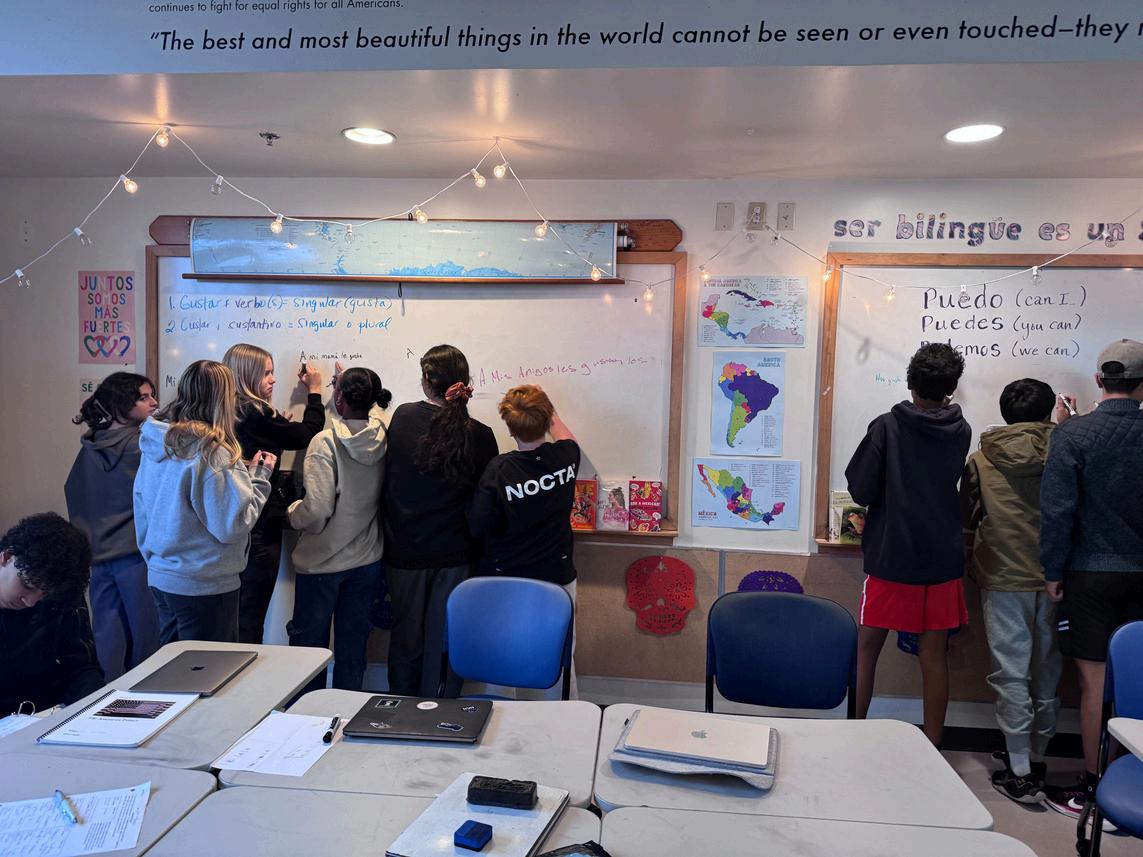

The Middle School French program is designed to immerse students in the vibrant world of French language and culture through active, engaging communication. With an emphasis on interactive and experiential language learning, students not only acquire the fundamental skills of speaking, listening, reading, and writing, but also gain a deeper understanding of French culture through authentic resources and meaningful assignments.
The Middle School French program is rooted in the belief that language learning should be dynamic, contextual and collaborative. After two years of Middle School French, students will have developed the confidence and skills to communicate effectively in basic French, equipping them with a strong foundation for continued language study and an appreciation of Frenchspeaking cultures around the world.
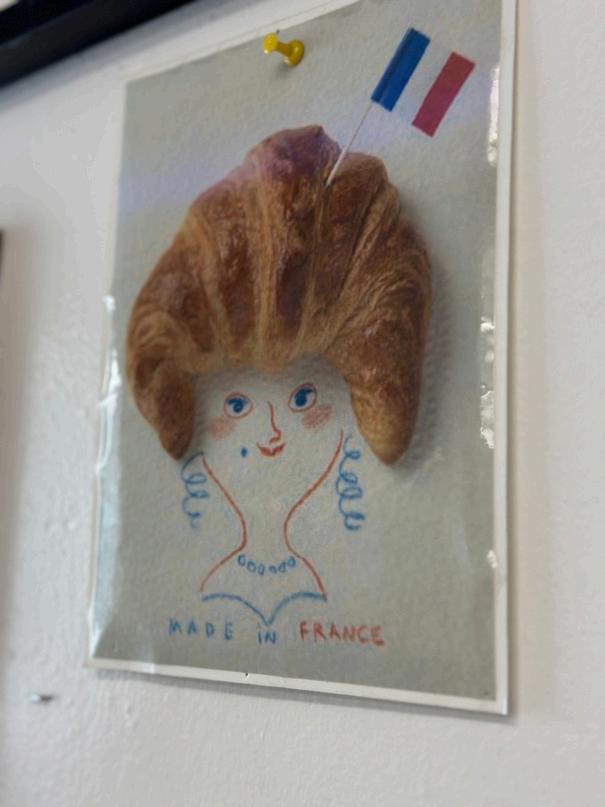
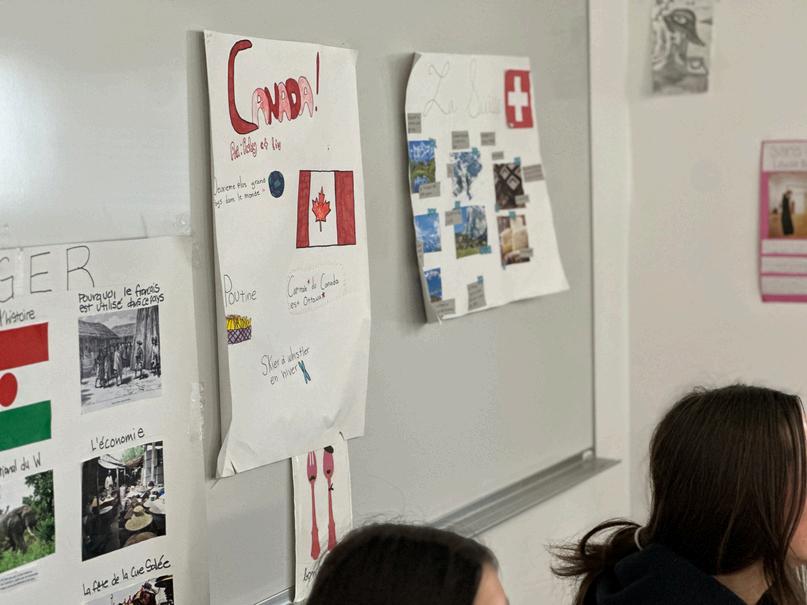
Teachers introduce students to the basics of French language and culture through active communication. Listening comprehension and oral expression skills are developed through the consistent use of the target language in the classroom as well as the use of documents created for native speakers (real-life recordings, songs, films, etc.). Reading comprehension skills are developed through the use of varied French texts created for native speakers (advertisements, blogs, official forms, etc.), and writing assignments are modeled after these documents. The course is project-based (for example, creating a model of an ideal neighborhood) and involves numerous group activities.
By the end of the course, students will have acquired enough language skills to achieve basic communication in simple everyday situations, provided the other person is talking slowly and clearly: greeting people, introducing themselves, communicating in the classroom, talking about friends, family, daily activities, environment. Students will be able to write a paragraph or a dialogue of about 80 words in grammatically correct sentences. Finally, they will be able to read and understand basic texts (letters, personal ads, restaurant menus, etc.) as well as the main points of an oral conversation.
Students build on the basics of the language introduced in French 7 while expanding their knowledge of the language and culture as well as developing their communication skills. Only French is used in the classroom. Teachers continue to emphasize the developing the following skills: speaking, reading, listening and writing Authentic French resources are used to refine these skills. Writing assignments are modeled on reading comprehension documents.
Students learn to incorporate different time frames in their work. The course is task-based and involves numerous group activities. By the end of French 8, students understand sentences and frequently used sentences related to areas of most immediate relevance They can communicate in simple and direct exchanges on familiar and routine matters. They can talk about themselves, aspects of their background and their environment.
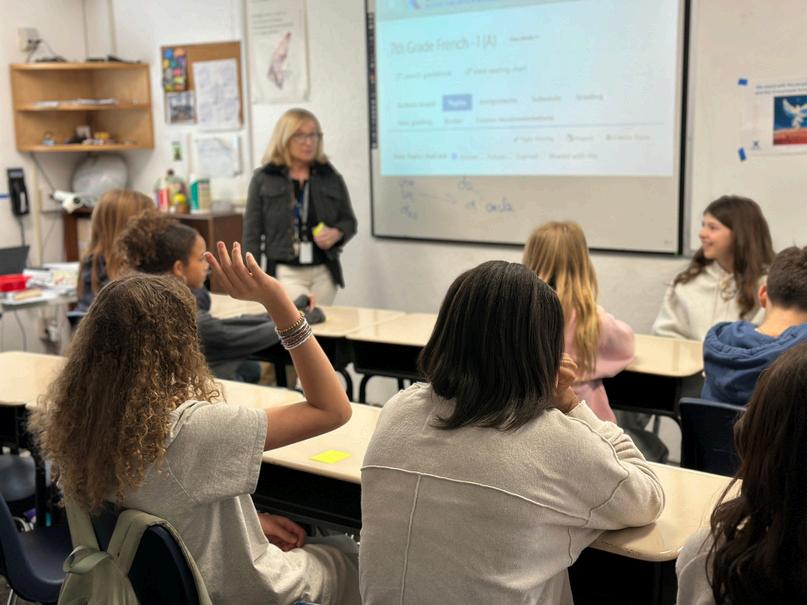
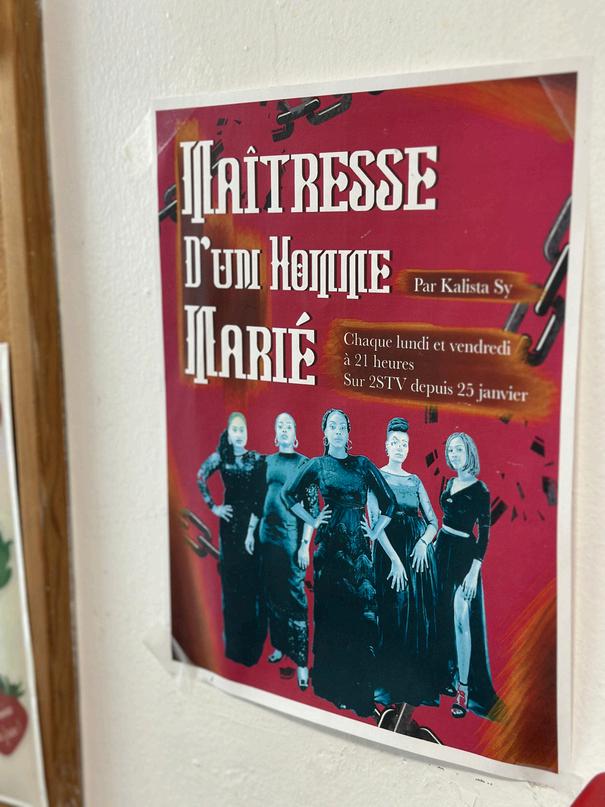
The philosophy for PE is “Learning through cooperation and improvement of entry-level skills.” Some units include cooperative activities, fitness activities, disc games, gym games, field games, aquatics and gymnastics. There is something for everyone. It’s not just about physical skills, but how you can improve on where you started!
Along with developing motor skills, we focus on sportsmanship and becoming a well-rounded, socially responsible individual.

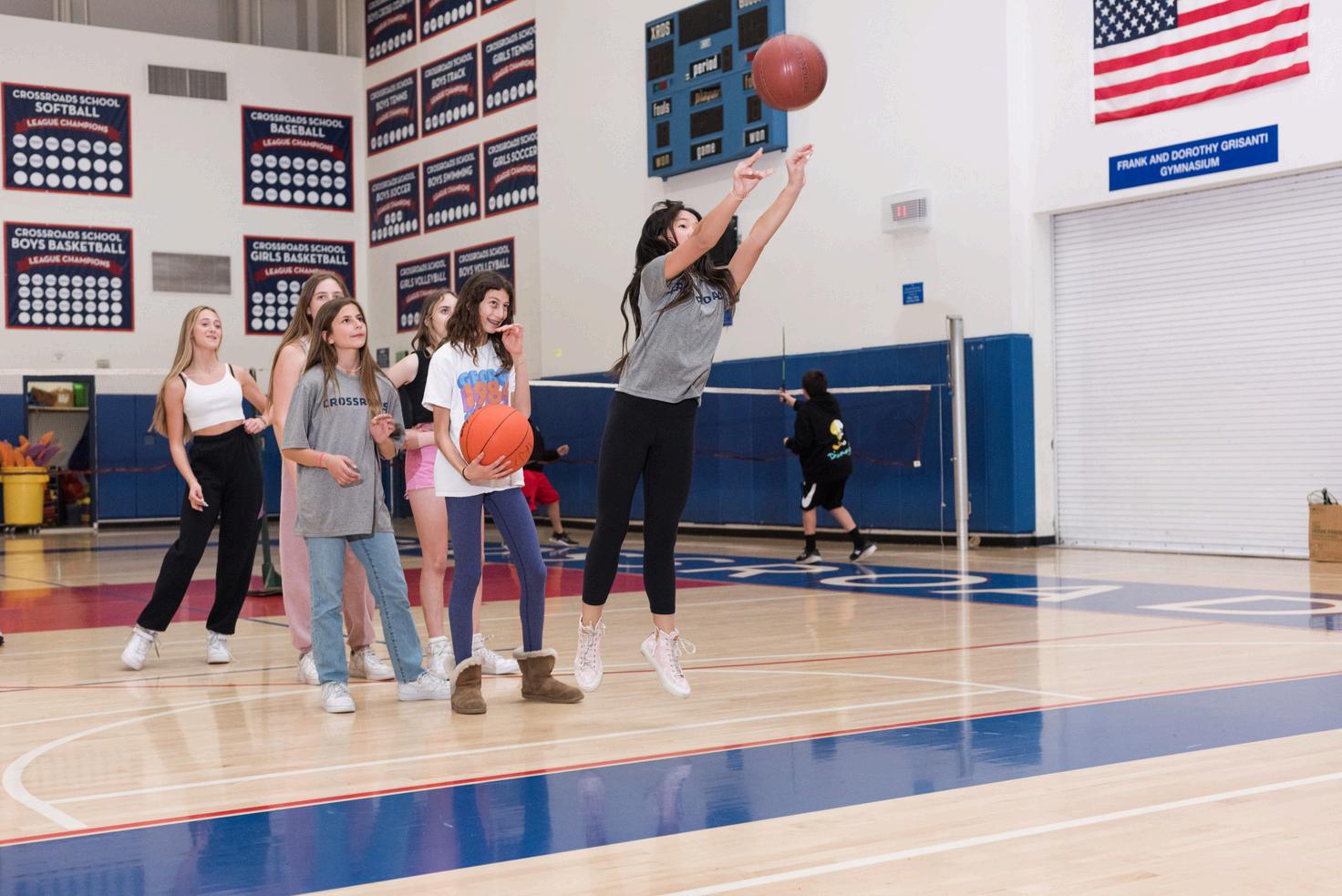
Sixth grade PE truly encompasses the idea of fair play and inclusion. All games and activities are designed to include everyone and give each student a fair chance to be involved. Instructors emphasize cooperative play that accommodates a wide variety of skill sets. We want all students to learn about each activity without feeling the pressure to perform at a high level. Students do not need any prior knowledge of games or activities and will feel confident in their understanding of given concepts by the end of the year.
Seventh grade PE begins where sixth grade PE left off. Collaborative play and cooperation remain paramount to ensure all students are given a fair opportunity to participate and enjoy themselves Teachers introduce students to units that teach them about the rules and nuances of different games and activities. Play will become a little more competitive as students’ level of understanding and ability begins to increase. Again, students do not need any prior knowledge of the games or activities but will have a baseline of experience from the prior year. By the end of the year, they will have a wealth of knowledge about the games and activities they were involved in, allowing them to further explore those activities on their own.
Eighth grade PE builds on units from previous years, but places an emphasis on wellness. We introduce cardio by running the mile on a consistent basis and learn about other fitness components. Students do not need any prior experience but can expect to walk away with a wealth of knowledge on how to create and maintain their own personal fitness goals They still play games and engage in other activities, but the idea is to learn more about their own bodies and understand what it takes to maintain a fitness routine.


Life Skills is a unique, process-oriented class designed to raise students’ self-awareness, compassion and appreciation for others. Expertly guided by instructors trained in the practice of Council, students reflect on their lives and examine the quality of their relationships to themselves, others and the larger community.
In this Council-style format, students sit in a circle, speak one at a time and listen intently. The process is designed to teach individual and interpersonal skills that will enable students to cope more effectively with life’s challenges while nurturing relationships, enhancing and supporting self-esteem and empathy, and fostering a sense of connectedness with their teacher and their peers.
Through Life Skills, students learn to embrace differences, celebrate human diversity and develop greater compassion for and understanding of self and others.
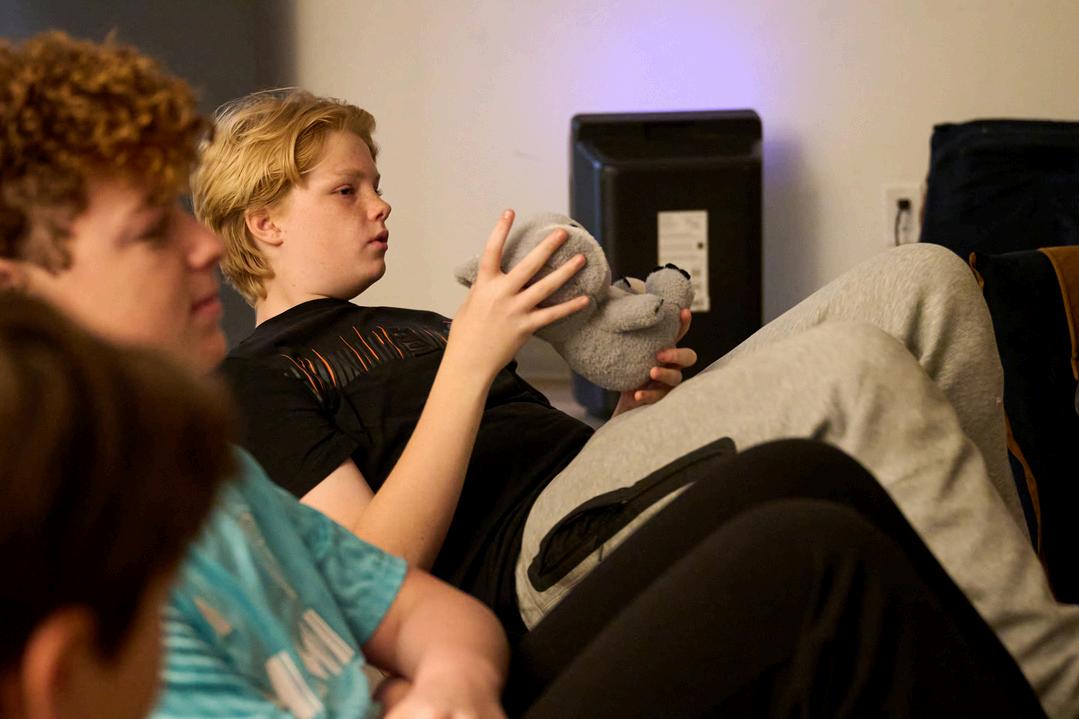
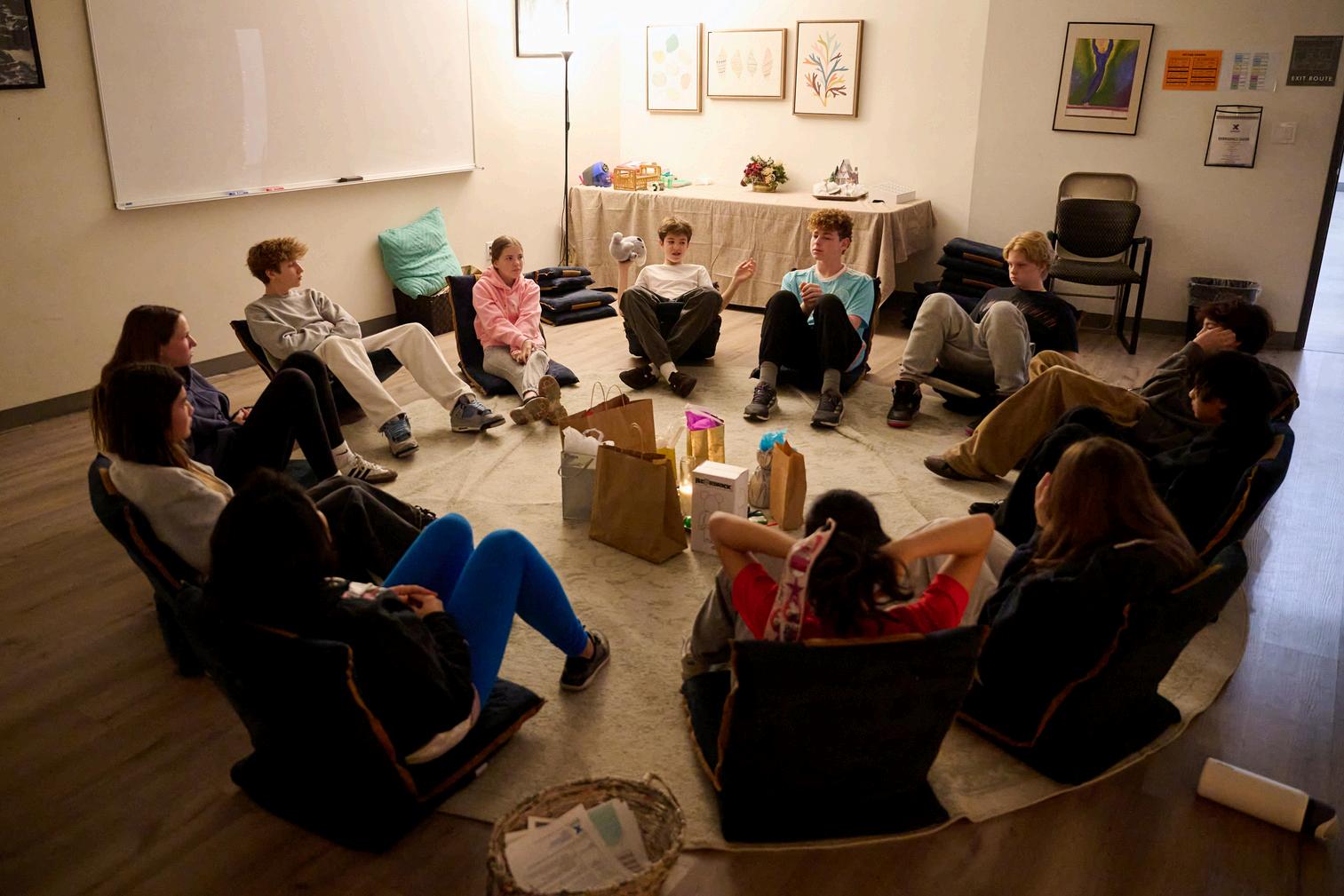
Sixth grade Life Skills is an important program to help students acclimate to Middle School socially and emotionally and to feel connected with each other and their community in creative ways. Students take part in interactive activities including storytelling, art, trust games and group-building exercises. Teachers support students in their transition to a new campus and their efforts to meet new friends.
Students explore family traditions and values, how they treat each other and themselves, their likes and dislikes, and their sense of personal identity. At the center of the curriculum is Council. This key practice of sitting in a circle and speaking one at a time offers the opportunity to hear others’ thoughts, stories and observations, and promotes respect, trust and connection. Council also builds their ability to listen with empathic focus and speak authentically, nurturing their self-discovery so they may build self-esteem and respect for others on an intrinsic level. The goal is to take these skills through their journeys in school and out into the world.
Capable of deep thought and intelligent discourse, sixth grade students are full of enthusiasm and spontaneous impulses to express who they are. It may be challenging for them to sit quietly in a relaxed forum such as Council. We expect them to do their best, and we support each student as they participate according to their maturity level. We encourage authenticity, respect and mindful presence during class. Most importantly, we want them to enjoy the opportunity to have fun while looking at themselves and life in a new light.
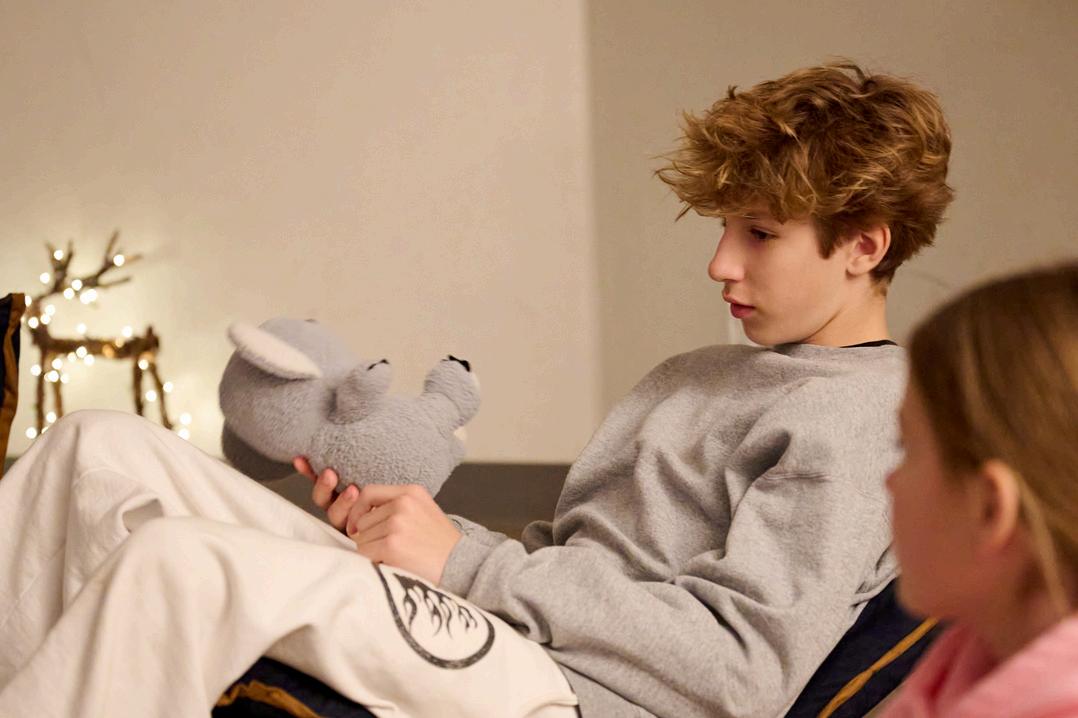
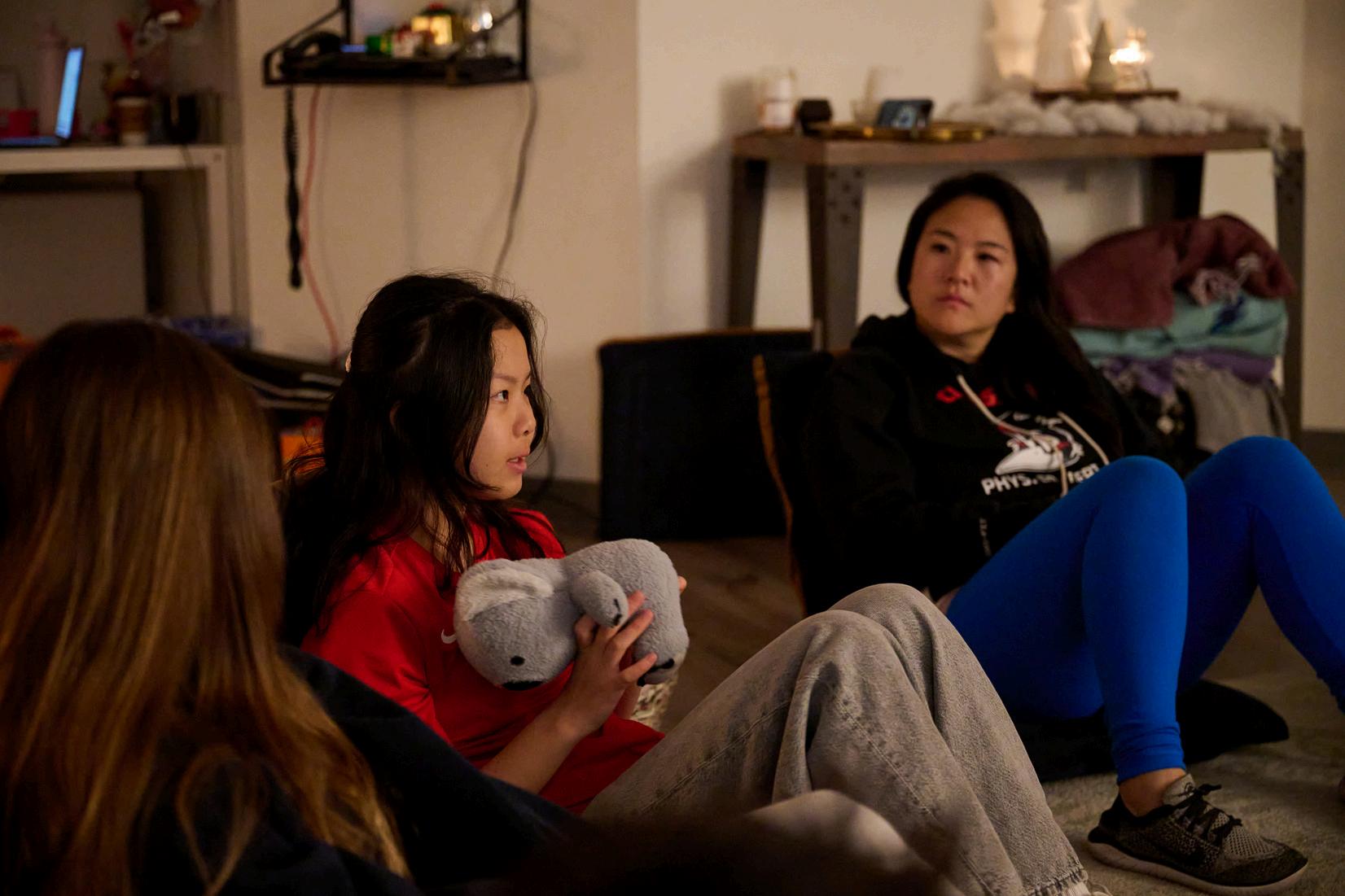
Seventh grade Life Skills centers on relationships with peers, forming identity, determining personal values and cultivating belonging, connectedness and healthy friendships. Along with physical changes can come powerful emotional changes at this age: The transition from childhood to adolescence commences and identities begin to form. Having completed their first year in Middle School, seventh graders feel grown up and want to be treated with respect and understanding. Their tendency, however, is to look at themselves through the eyes of others, and friendships can change as frequently as their moods. Peer pressure can be tremendous. Therefore, Life Skills 7 instruction focuses on identity building, setting personal boundaries and using “I” messages. Activities such as storytelling, Council, artwork and group-building games play an important role in helping students get a handle on their personas and develop deeper self-knowledge
As seventh grade is a time of high energy and anxiety, we anticipate that self-regulation may be challenging. Students are allowed to express themselves authentically, yet we expect them to be aware of their boundaries and those of others. We ask that all students are willing to listen generously, have the courage to share and explore new ideas, and accept the different perspectives and personalities of their classmates We anticipate a transformation from self-centeredness to community. We expect our students to arrive full of questions and wonderment so they can approach eighth grade with a sense of grace and acceptance of who they are.
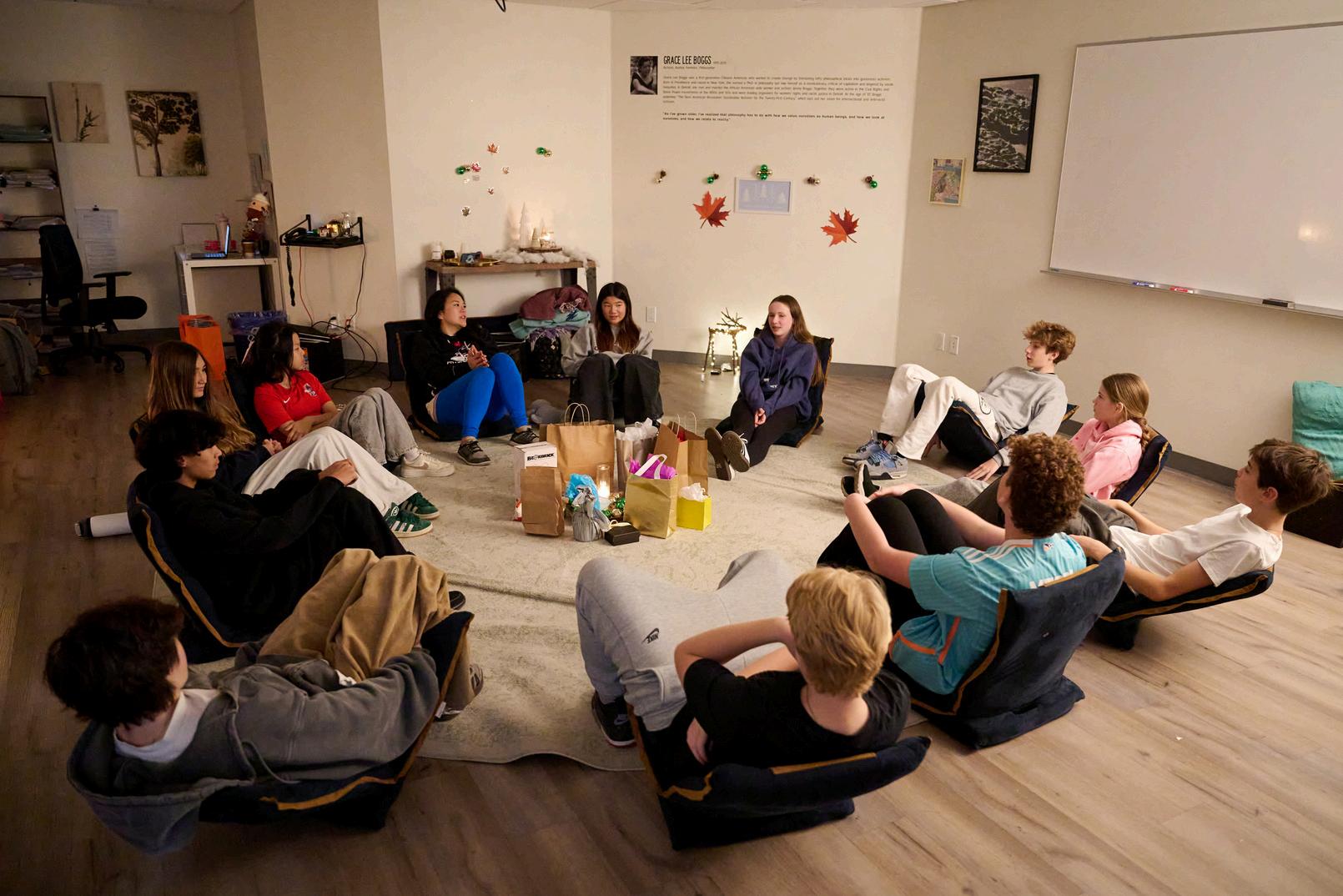
Eighth grade is a golden time for students in Middle School. By now, most are well into the physical changes that come with adolescence and have begun to find balance in their emotional state. They have a clearer sense of who they are and how they fit into the world around them. This state of equilibrium often promotes a sense of self-assurance that can become the foundation for new exploration of personal identity, values, gender roles, challenges, assumptions and relationships. Students consider their values by reflecting on their cumulative personal, familial, social and global influences.
Life Skills teachers lead students in discussion on topics including cultural norms, influences in the media, stereotypes and gender biases. Through this exploration, students develop a deeper understanding of and tolerance for others, while exploring self-awareness, relational values and healthy friendships. We work on visioning and affirmations to help prepare them for high school.
We expect eighth graders to be tolerant, disciplined and self-aware. We look forward to more focused discourse. We encourage students to look inward and, if they choose, to share their feelings. Confidentiality is very important. We count on students to be authentic, present and considerate for the group dynamic to evolve. We expect them to help build trust, be empathic to their fellow students and keep confidence. We encourage them to be actively involved in their own personal journey and in building community at Crossroads
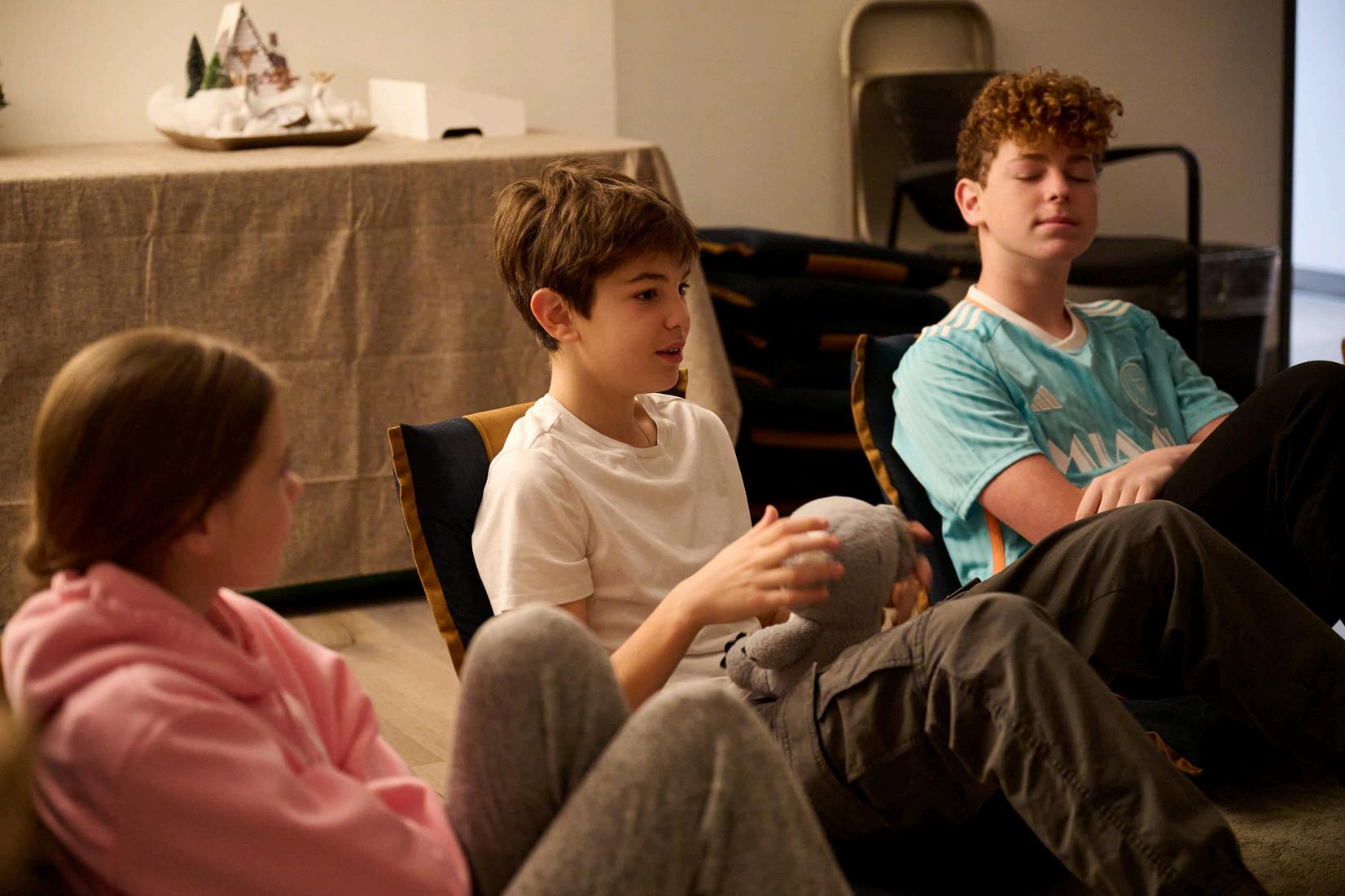
The Middle School Dance Department is dedicated to inspiring and developing well-rounded dancers and art enthusiasts. Teachers cultivate a supportive learning environment where students feel encouraged to take risks and deepen their appreciation for dance as an art form.
The department aims to make dance education accessible to all students by addressing the holistic needs of each individual and offering a curriculum suitable for all proficiency levels.
Courses focus on developing foundational dance techniques and choreographic skills, preparing students for advanced courses in the Upper School Dance Department.
Students have various performance opportunities, including showcasing their work for Crossroads Elementary School students and performing at multiple on-campus events.
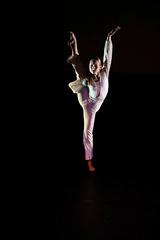
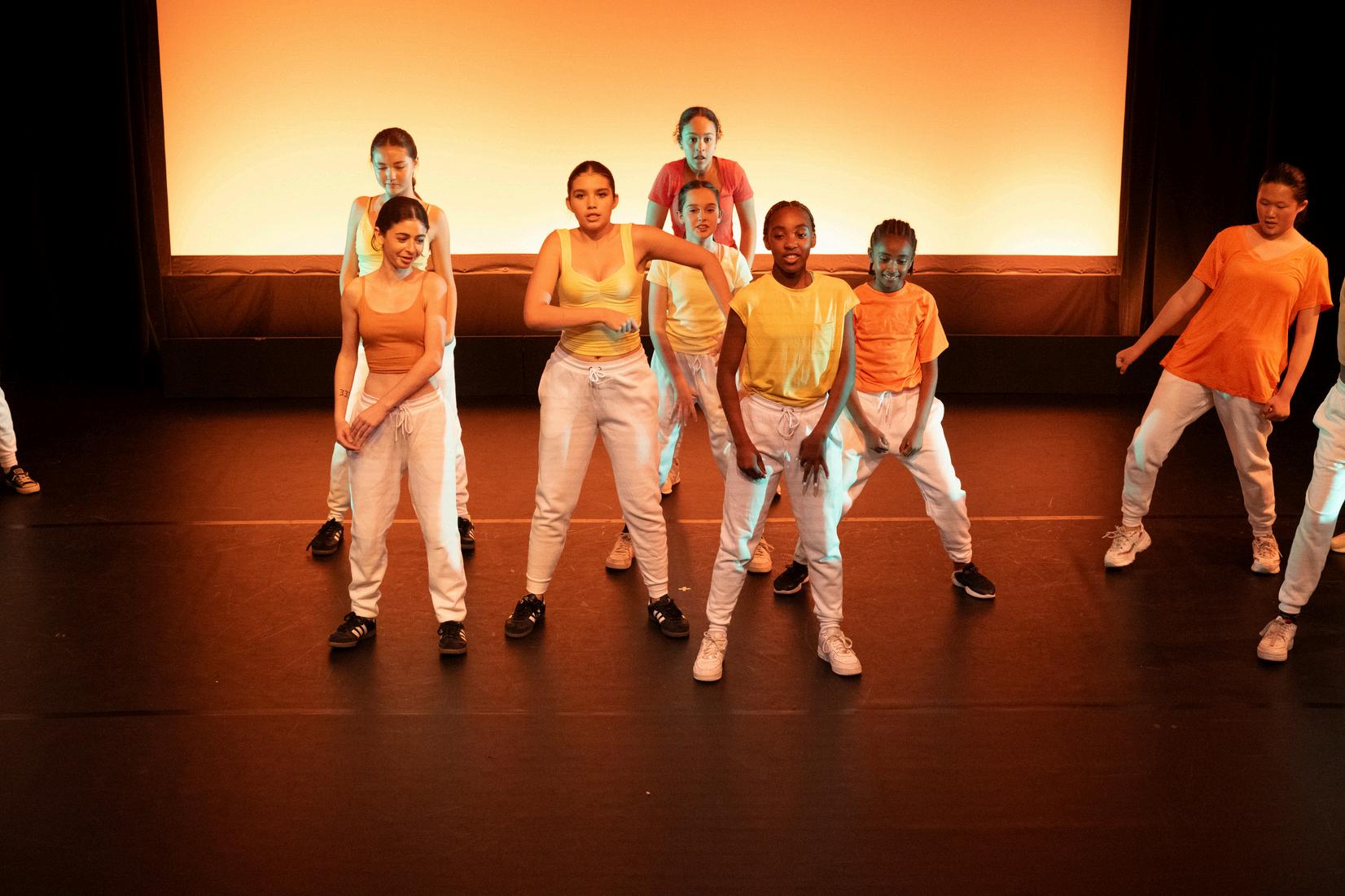
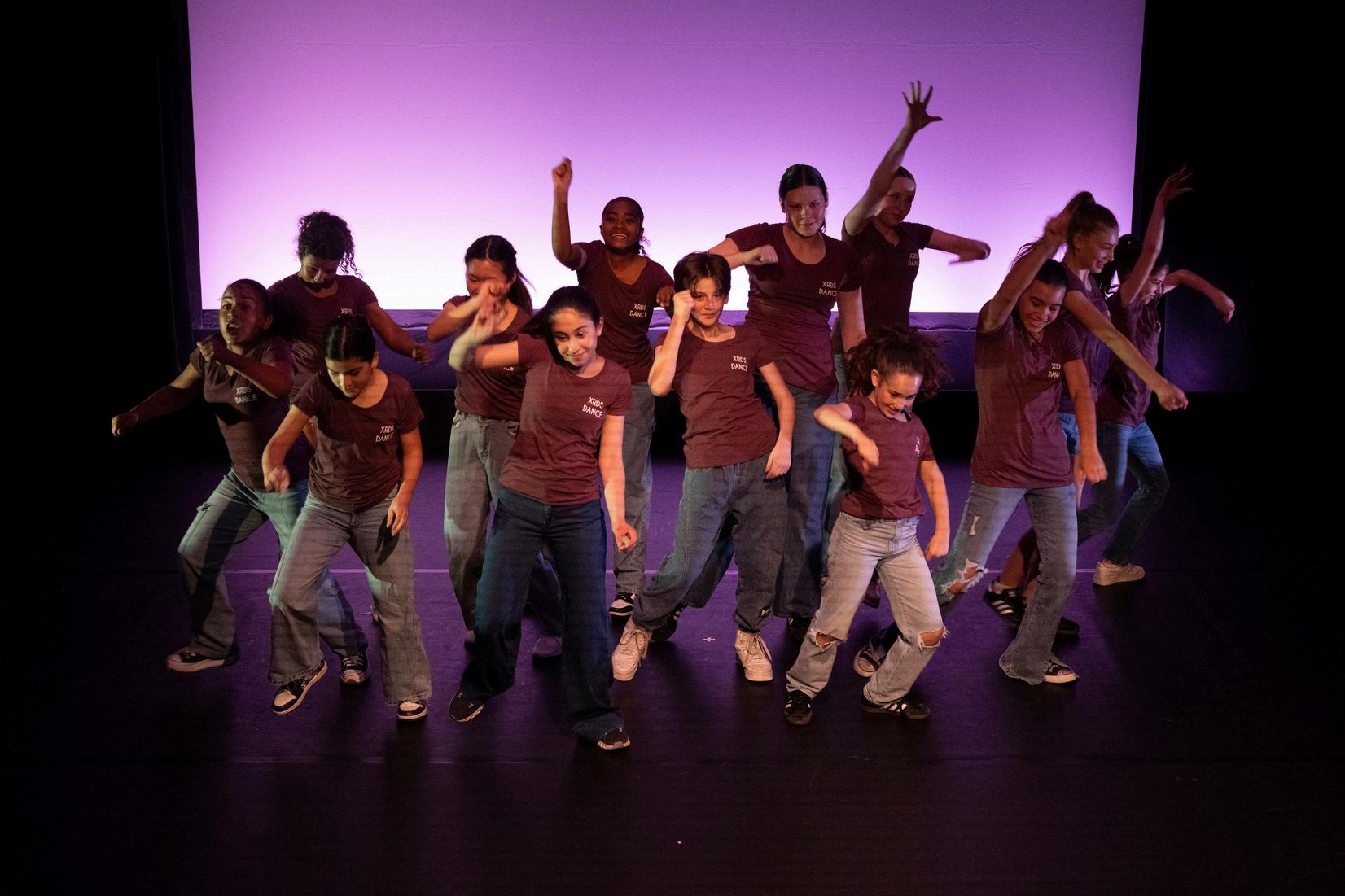
Middle School Dance Company is a year long course that allows students to dive into the creative process of rehearsing and performing choreography. The focus is on Jazz and contemporary technique and choreography; students develop artistry and performance training through the process Dance Company performs at a variety of events on campus, such as Admission Day Open House, Halloween Boo-Bash, Middle School Sports Spectacular, Middle School Spring Dance Concert and more!
This course introduces students to the vocabulary of Jazz and Hip-Hop movements. Through dance warm-ups and drills, students enhance their flexibility and core strength. Teachers introduce students to basic dance grooves and provide a working knowledge of dance elements, focusing on body, action, space, time, energy and relationship Students develop a critical lens for analyzing choreography by studying cultural and staged dance films. Finally, they apply their knowledge in a collaborative group project to create original mini-dances that are performed at the end of the term.
This course enhances students' technical dance skills while encouraging them to explore dance as a medium for personal expression and social commentary. It provides a comprehensive understanding of dance and its various dimensions Students begin by studying the physical and mental health benefits of dance, using practical movement applications to build a strong foundation for their practice. They then explore various dance styles that have emerged from oppression and challenging circumstances. Collaborating with peers, students research and present on a specific dance style, examining its connections to identity, oppression and socialization. Finally, building upon the choreographic tools learned in Dance 6, students collaborate to choreograph and perform an original dance that is performed at the end of the term.
Contemporary Dance is a yearlong course for students who are ready to take a deeper dive into dance technique, choreography and performance Students learn choreography and perform throughout the year, expanding their knowledge of compositional tools, developing a sense of artistry in movement and collaborating with peers.
Eighth Grade Dance focuses on contemporary choreography and technique, with room to explore hip-hop vocabulary and other styles that meet the interests of the current group. This class is recommended for students who are interested in taking dance and/or drama in Upper School. Dancers perform at Crossroads community events such as Admission Day and Sports Spectacular, as well as Dance Department events and the Middle and Upper School Spring Dance Concert. Eighth Grade Dance is a safe, non-competitive space where discovery, curiosity and inquiry are encouraged!
The Middle School Drama Department provides performance-based, experiential courses in which students are invited to explore their own personal creativity and capabilities.
Each course allows students to utilize their imagination, physical expression, self-understanding and empathy when they come into class with an open mind. We believe that everyone can reach their full potential and that drama should be fun for everyone.
Our well-rounded curriculum provides opportunities to learn through experience, observation and listening. We strive to create a community within each course in which students feel supported by their peers and confident that their voice is of value.
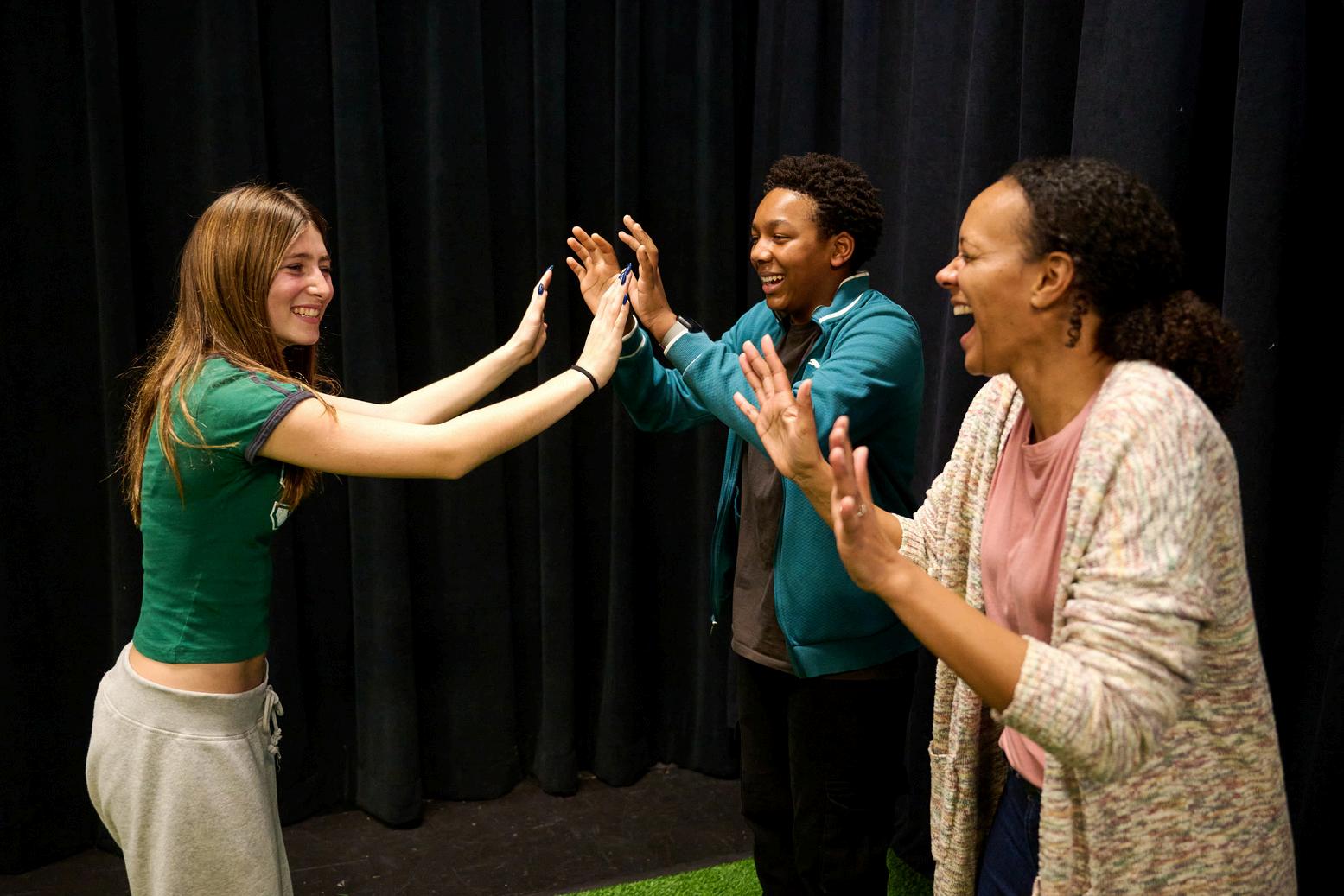
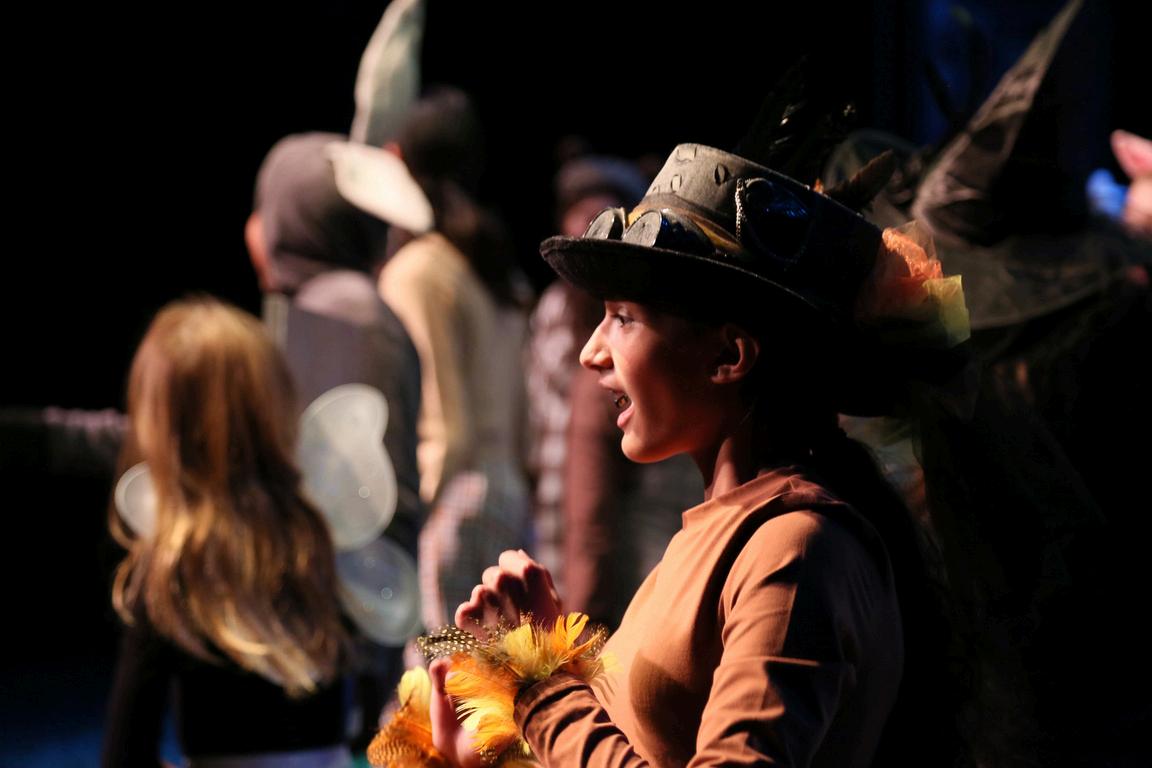
This introductory course requires no prior knowledge of theater or improvisation. Students are encouraged to bring their creativity and an open mind, as well as a supportive attitude.
Teachers impart the basics of performance for stage through various improvisation games and scene work, including “Zip, Zap, Zop,” “Captain’s Coming” (with stage directions and theater terminology), “Taxi” and “Freeze.” Each class begins with a warm up for both the brain and the body, preparing students to engage in creative and quick-thinking activities.
Throughout the term, students learn follow stage directions, create collaborative stories, be attentive listeners and think on their feet, while mastering the basics of using their voices and bodies to tell stories on stage.
This course is designed to enhance students’ confidence and performance skills through the art of storytelling. Students are not required to have any prior knowledge of theater or improvisation; however, the skills learned in this course are intended to build upon the skill sets learned in Drama 6.
The term begins with a brief review of improvisation games and activities learned in sixth grade, with an emphasis on collaborative storytelling. Drama 7 focuses on character development, scene work, collaboration and creating a clear story arc. Students work in pairs throughout the term to create skits with distinct characters and strong character relationships (e.g. mother/daughter, best friends, etc.).
The culmination of this course is a small-group scene writing project that students perform for their classmates at the end of the term. This project is intended to encourage collaboration and creativity while utilizing the storytelling skillsets they have learned throughout the course

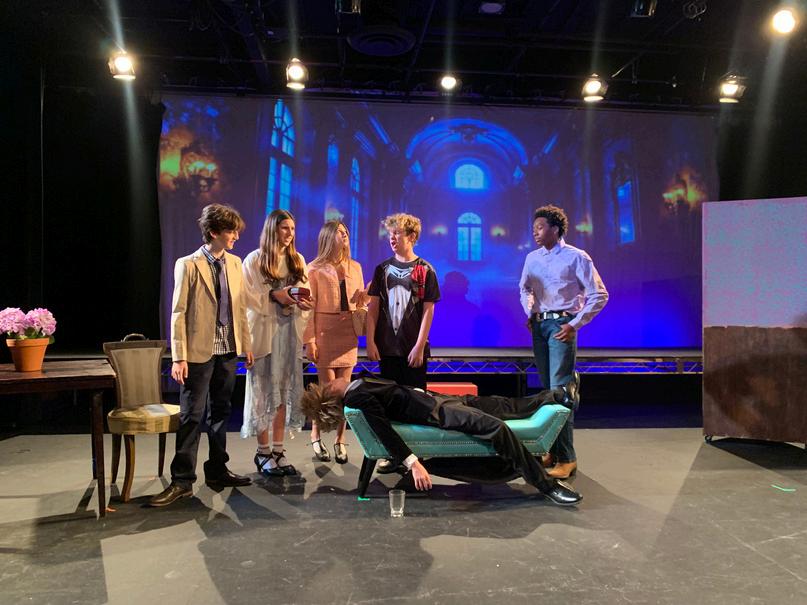
This year long course is intended for students who are interested in furthering their knowledge of the craft of acting. An understanding of stage directions, vocal and physical performance, basic improvisation and script writing are required to take this course.
Students begin to delve into the art of character and script analysis, allowing them to better understand their characters from a cerebral standpoint. Teachers introduce various acting techniques, including those of Meisner, Stanislavsky and Chekhov These techniques are intended to bring the actors’ cerebral understanding of a character into a more visceral perspective.
Throughout the term, students explore the subtle differences between acting on stage versus acting for the camera. They also have the opportunity to learn about some behind-the-scenes roles such as writer, director, director of photography, sound designer, costume designer, prop master, etc.
This course culminates with a showcase of the throughout the year.
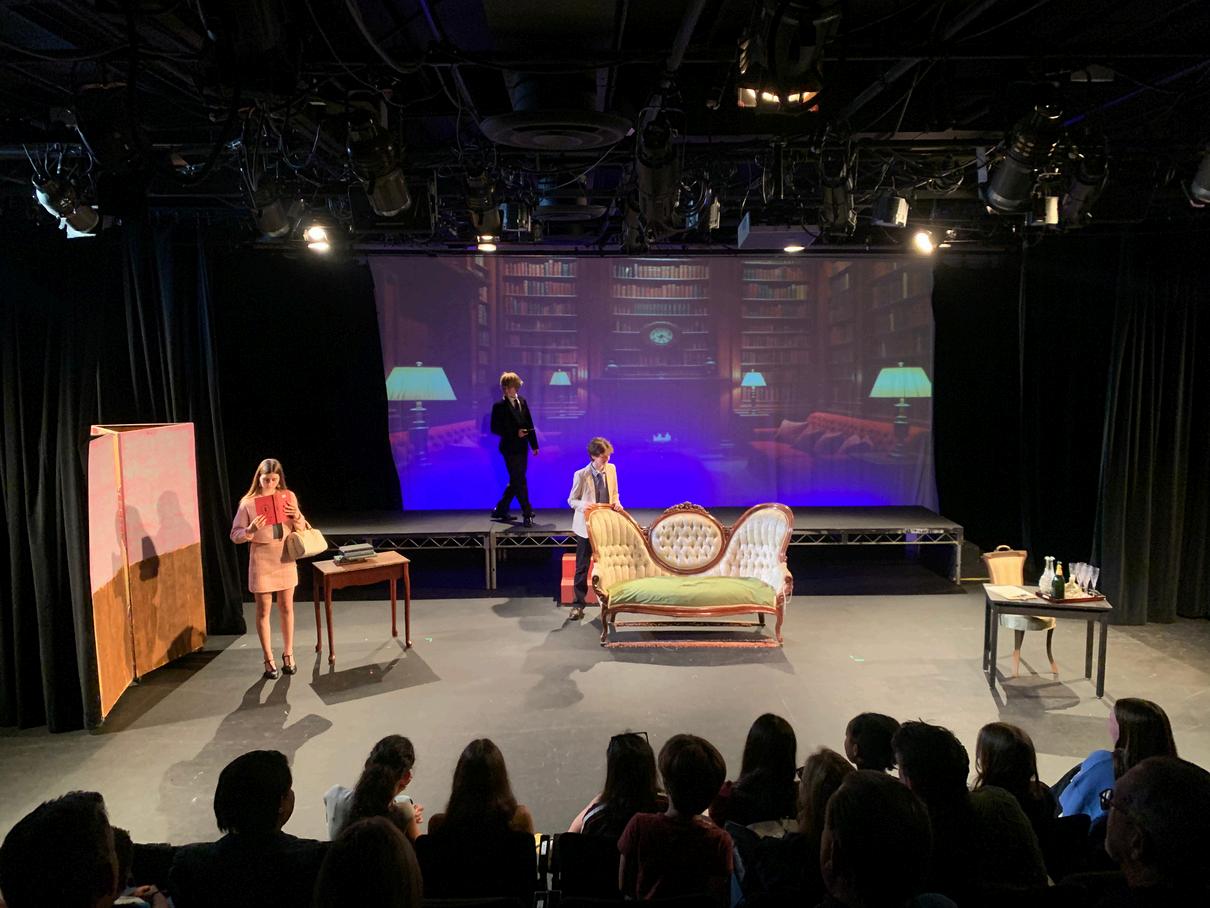
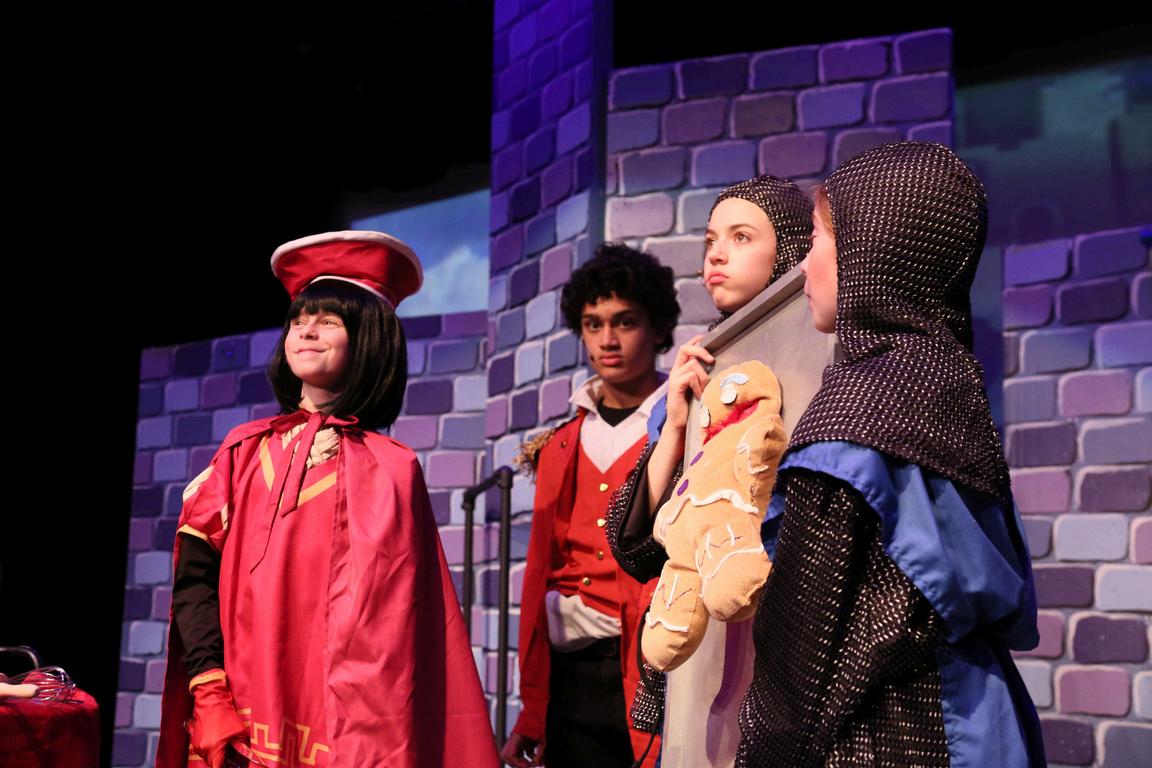
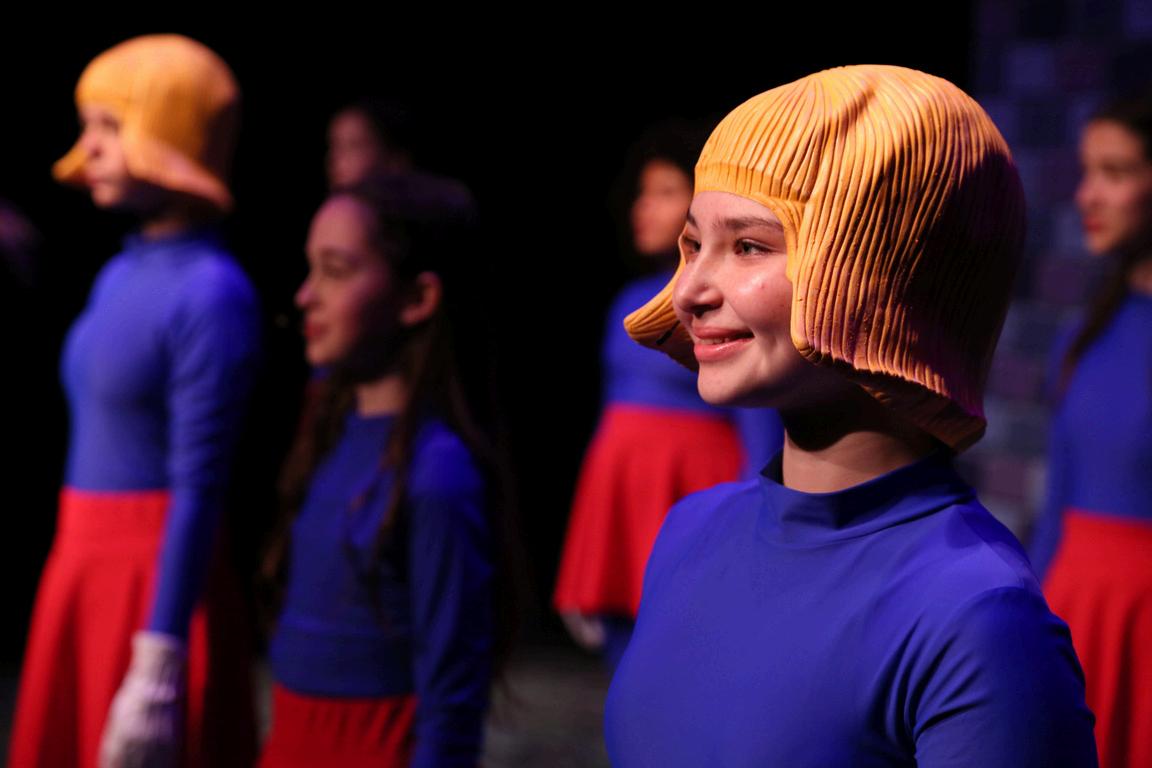
Middle School Tech Theater provides an introduction to all technical aspects of theater production and gives students hands-on experience. Teachers instruct students on how to use tools, paint scenes, hang and focus lighting instruments, construct props, design costumes and build sets.
Tech Theater students are heavily involved with all aspects of the Middle School Players productions and may serve as backstage running crew members if they desire additional hands-on experience. In addition, students can to delve more deeply into the design aspects of theater, such as set design, if they would like to explore another side of technical theater.
This course is strongly recommended for any student interested in the backstage elements of the theater and anyone looking to get involved behind the scenes.
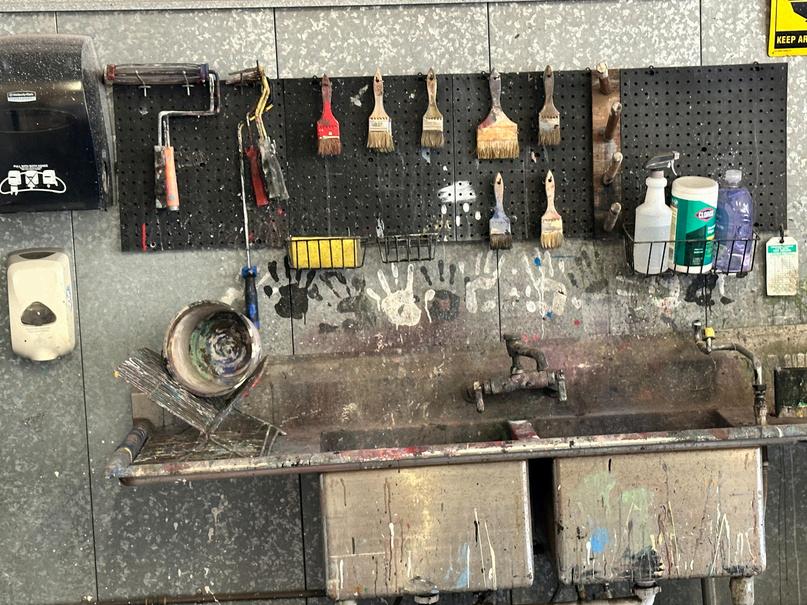

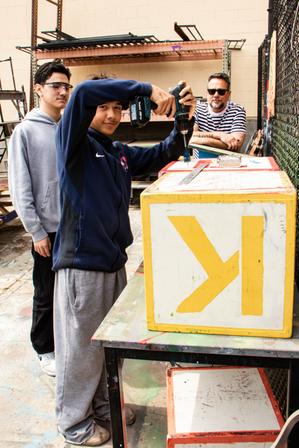

Courses offered by the Music Department provide students with an appreciation for music’s rich history in American culture and the world at large.
In addition to learning foundational elements of music, students are invited to create and engage with music in ways that foster community, building an understanding of others and a respect for the power and mystery of the art form.
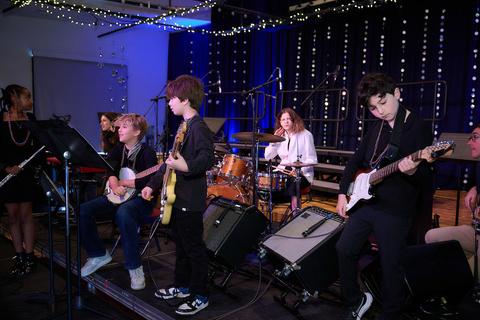
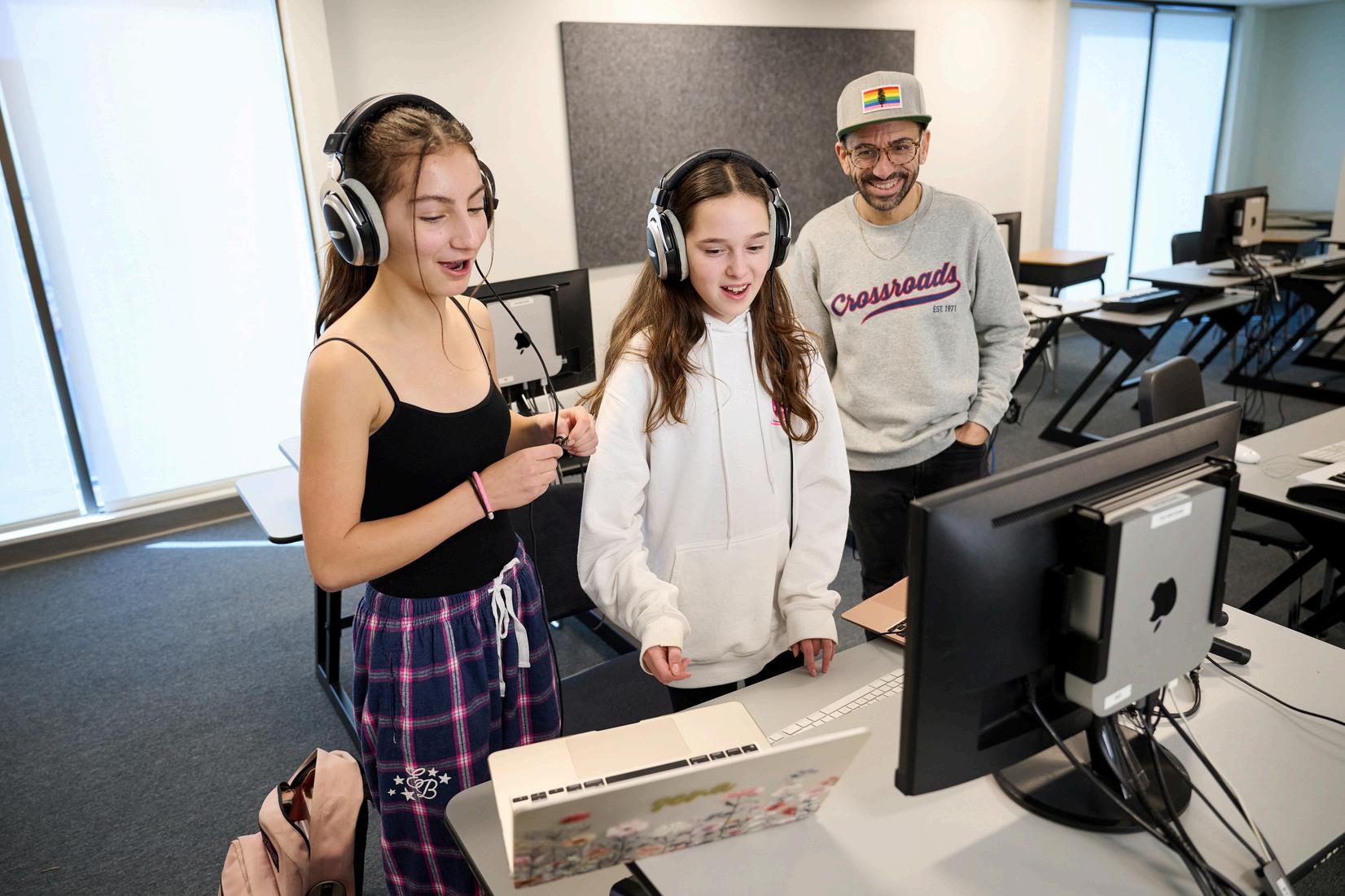
Sixth grade Chorus focuses on all styles of vocal music, as well as instruments and music theory. Teachers stress group work and collaboration as students learn how to properly warm-up their voices and study melody and harmony. Students also study the history of instruments and categorize them by how they are played and what they are made of. Basic music theory is another important aspect of the class; students are taught to read music through the study of musical signs, solfège and rhythm activities. The class culminates with a personalized medley of songs and rhythm activities created and performed by students.
In World Music, sixth graders are exposed to a wide variety of musical styles from around the globe and start to develop many of the necessary skills to be a successful musician In addition to gaining cultural and historical knowledge, students will also get hands-on experience in world drumming.
These unique learning opportunities allow students to gain a better understanding of rhythm, music and ensemble playing while they learn about other cultures, places and societies, becoming global citizens of the world with deep cultural understandings Students demonstrate their understanding of the topics and key elements through group presentations, small projects, group discussions and a culminating activity.

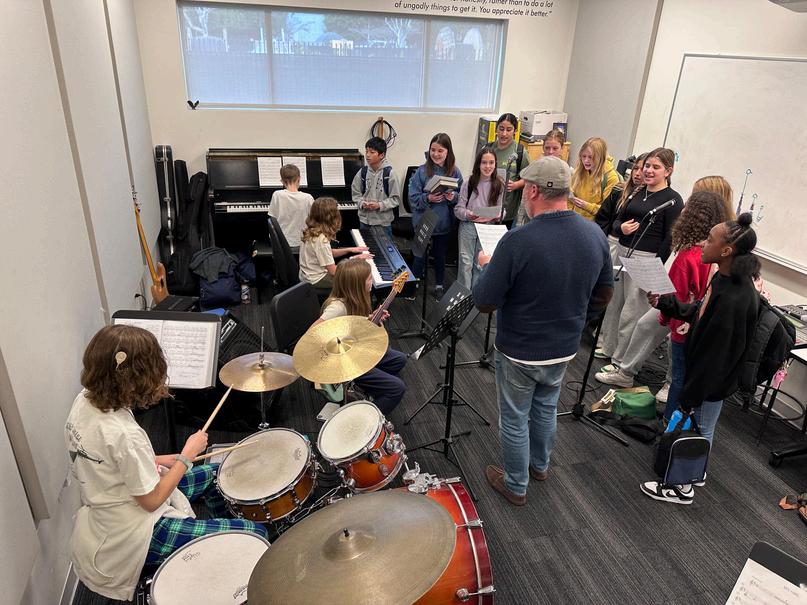
In Music Listening, seventh grade students are exposed to a wide variety of musical styles and expand their knowledge to appreciate and understand the elements of music. In addition to gaining historical knowledge about different musical styles, students develop various musical skills that allow them to deepen their music listening experiences Course topics include pitch, texture, dynamics, rhythm and timbre.
The long-term goal is for students to listen to and understand artistic intentions while supporting these intentions using evidence found in the elements of music. In addition, teachers instruct students in the foundations of music technology and recording techniques. Students will demonstrate their understanding of the topics and key elements through GarageBand projects, group discussions, writing prompts and a culminating activity.
In seventh grade, Understanding Music offers a historical overview of American popular music with a particular emphasis on the contributions of Black musicians in America.
The web-based music production software, Soundtrap, is used throughout, as students are tasked with remixing several samples of iconic recordings in a modern, electronic/hip-hop style.
Teachers guide students in their exploration of foundational elements of rhythm, form, instrumentation and harmony as a means to better understand all styles of music and inform students’ remixes
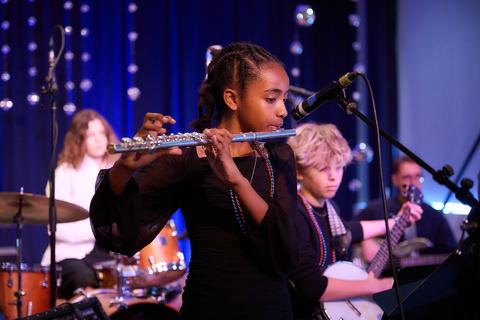
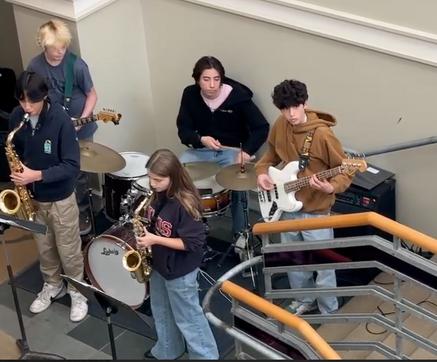
Electronic Music teachers take students through the process of composing and creating electronic music Through the use of digital hardware and software, students compose and arrange their own music by focusing on concepts such as harmony, melody, rhythm, and most importantly, the creative process.
Topics include: beat making/programming, instrument design and coding, arranging, remixing, film scoring, recording techniques, podcasting, piano and music theory.
Students mostly use Logic Pro, but also spend time working with GarageBand and Pro Tools. Student work is celebrated through composer showcases and other performance opportunities.
The Jazz Collective offers eighth grade students the chance to dive deeper into the world of jazz in an ensemble setting. Basic musicianship and fundamentals are emphasized throughout, as students explore a repertoire of classic and modern jazz compositions in preparation for periodic performances.
Eighth grade Orchestra is an advanced instrumental ensemble that focuses on skill building and musicianship. Through ensemble playing, students develop crucial skills such as teamwork, communication, music literacy and instrumental acumen.
Students cultivate creativity and self-expression through preparation of performances such as the Winter Holiday Concert and Spring Middle School Music Concert. Teachers and students work together to select the repertoire; genres include jazz, pop, movie themes and classical music.
Eighth Grade Orchestra is a supportive community of musicians and helps create a sense of belonging and confidence.
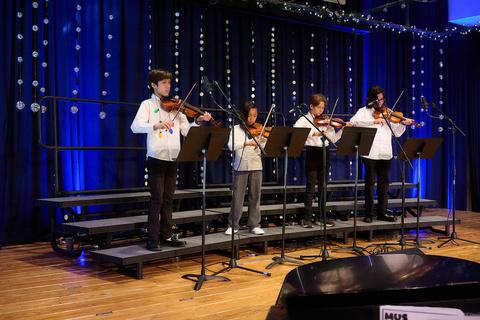
The Middle School Visual Arts Department embraces diversity, creativity and self-expression. We believe that every student should be able to explore their unique voice through art regardless of skill level or experience.
Through a curriculum that encompasses a wide range of artistic styles, techniques and cultural influences, we aim to broaden students' understanding of the world around them.
Our goal is to empower students to become confident and empathetic individuals who understand that the power of art can connect communities and inspire positive change in the world.


This course is designed to introduce students to the fundamentals of artmaking. Instructors will teach students various mixed media practices as they relate to different forms of art production. There is also an emphasis on drawing, as it is the foundation of many other creative disciplines.
Each larger project utilizes some aspect of art history as a starting point, in an effort to give the students both a foundation and appreciation for what has come before them. Teachers introduce a variety of art mediums to give students a wide overview of various processes and materials, both traditional and non-traditional. Throughout the artmaking process, there is a continual dialogue between the teacher and students and a learning environment that uplifts and supports each individual's unique and creative ideas, actions and responses.
Sixth grade Painting & Drawing is designed to deepen students’ skills and understanding of two-dimensional visual art. Students explore and share their unique subjectivity as they engage in traditional and non-traditional painting and drawing projects.
Working from observation, students create representational art that develops their “close-looking” skills and drawing techniques. They also embrace the element of chance as they incorporate non-traditional painting and drawing processes Throughout the term, teachers introduce students to contemporary and historical artists to help them develop historical and conceptual awareness and to build a vocabulary to discuss the making and
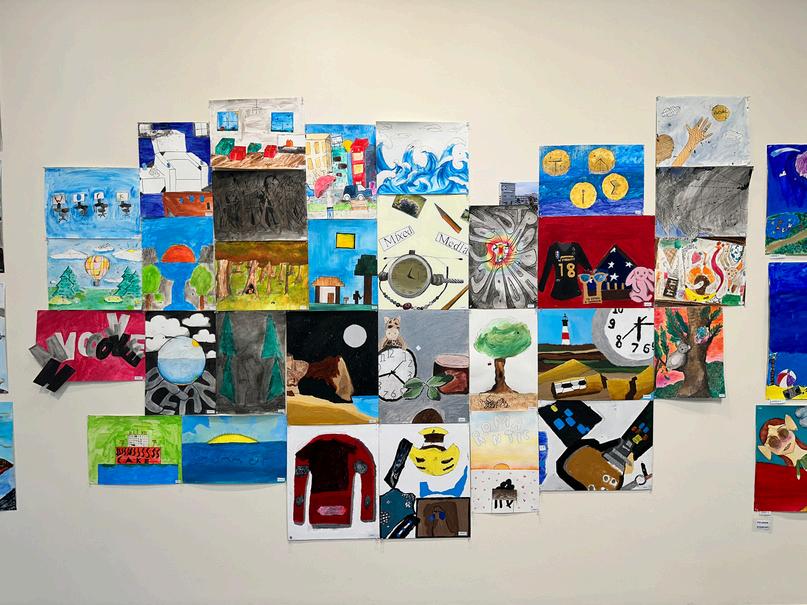
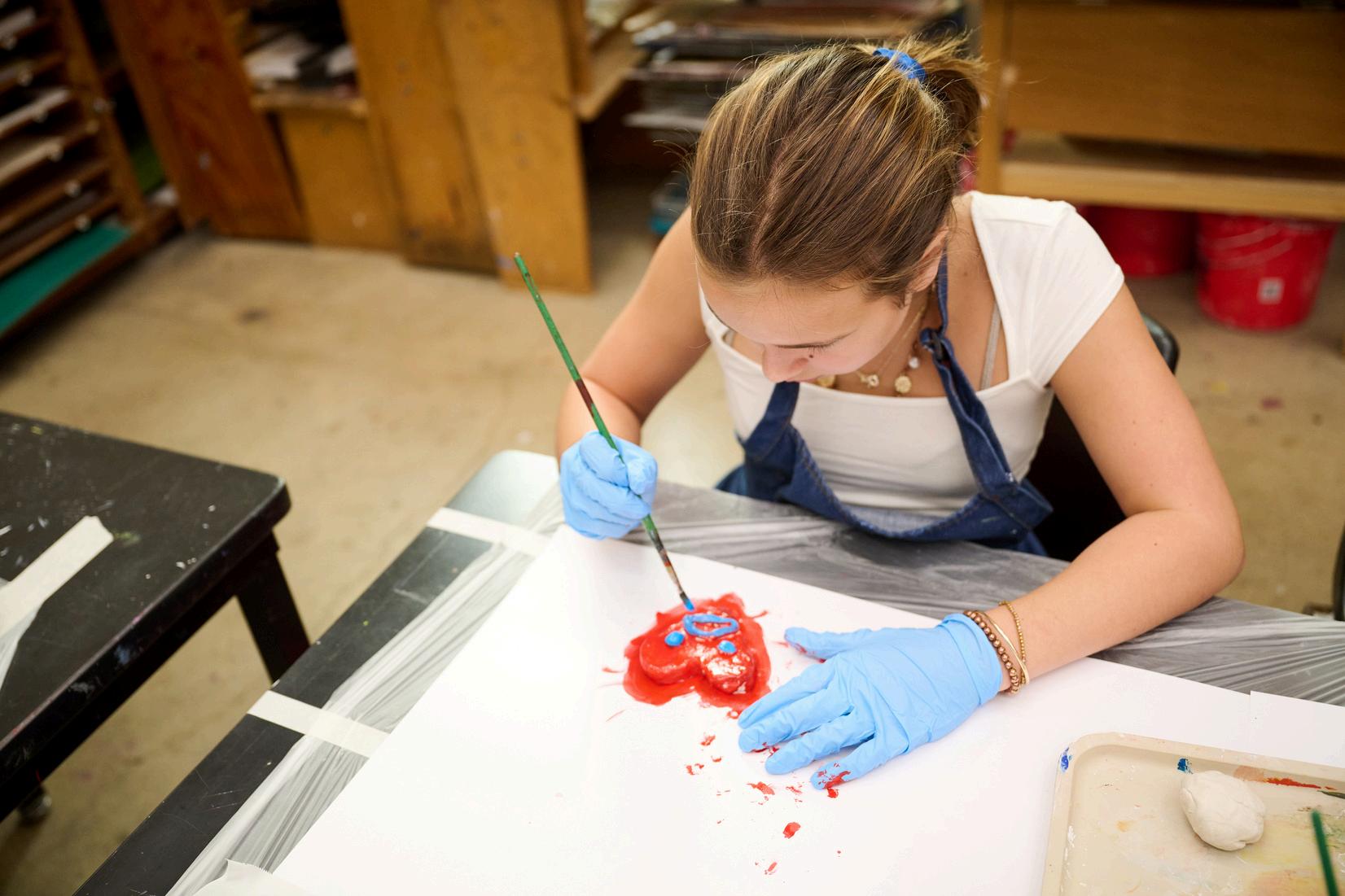
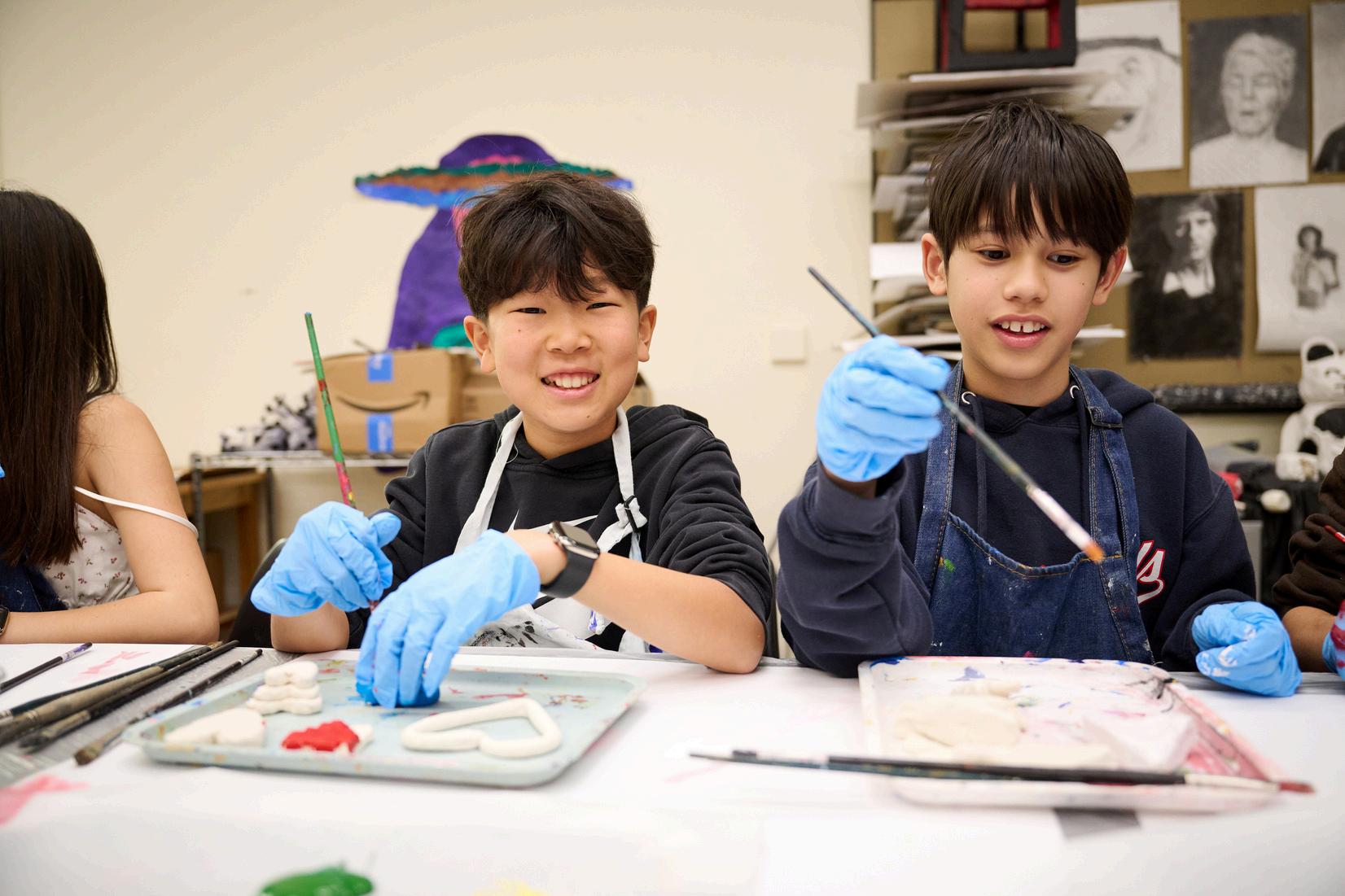
Seventh grade Studio Art is designed to continue building on the sixth grade Studio Art curriculum Primarily focusing on two-dimensional visual art, students engage in a range of art-marking processes to explore their subjectivity as they draw inspiration from their lives, surroundings, histories and imagination. Throughout the term, teachers introduce students to contemporary and historical artists and help them continue to develop vocabulary to discuss the making and viewing of visual art.
The course is composed of four main, multi-class projects, as well as smaller, single-class projects. Each of the main projects has four stages: research, planning, execution and reflection. Building on previous experiences, students work to hone their skills and deepen their understanding of artmaking.
Eighth grade robotics students will work as a team to design, program, and build a robot for competition. Past robots were designed to throw frisbees, corral wiffle balls, stack block towers, and even drive by autopilot. Industry professionals in the fields of mechanical engineering, computer science, marketing, and business will drive curricular elements in preparation for competition.
Joining this class requires participation in several weekend competitions.
Post competition season, Robotics and Art will explore how robots have been incorporated into the arts.
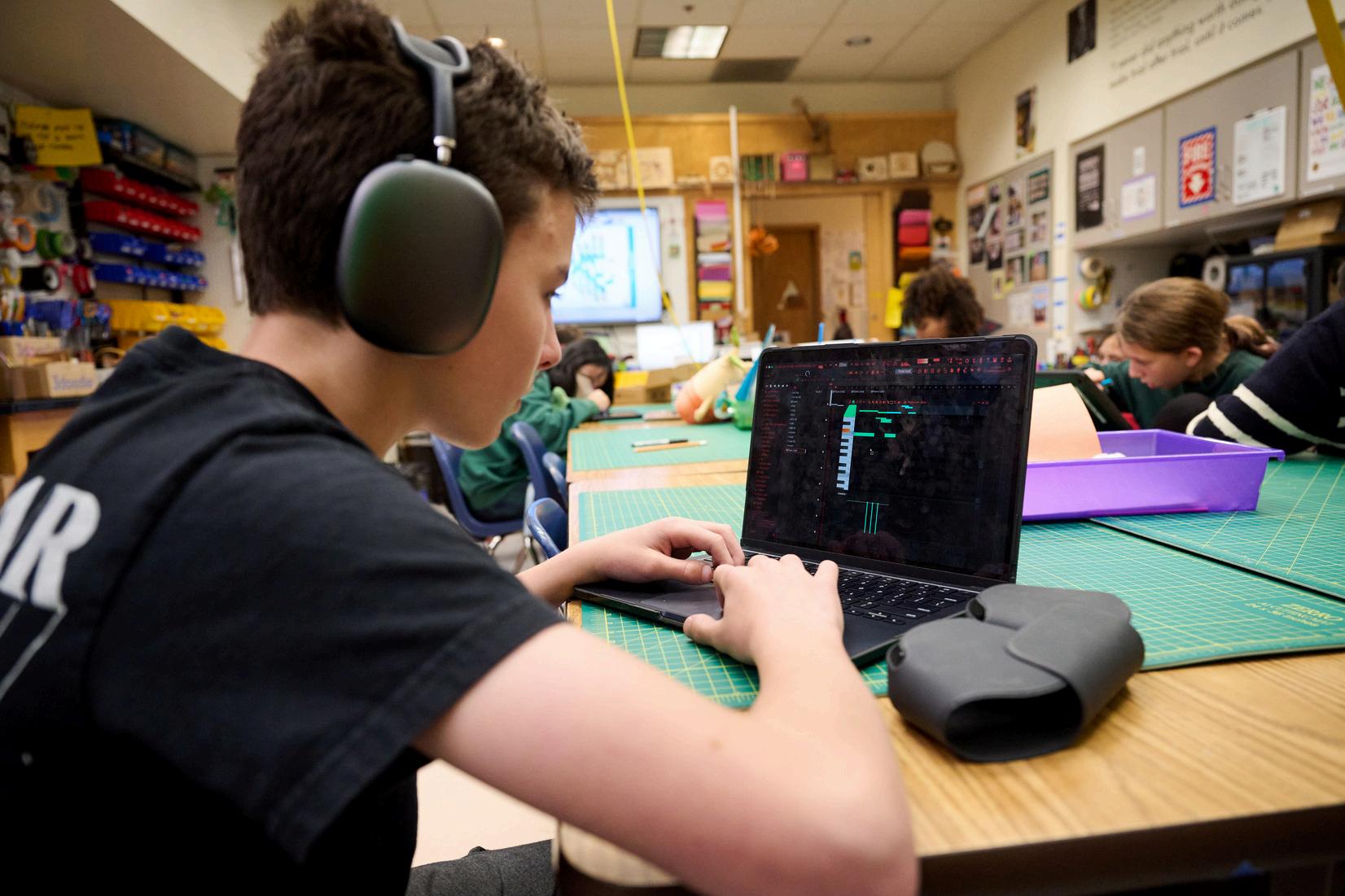
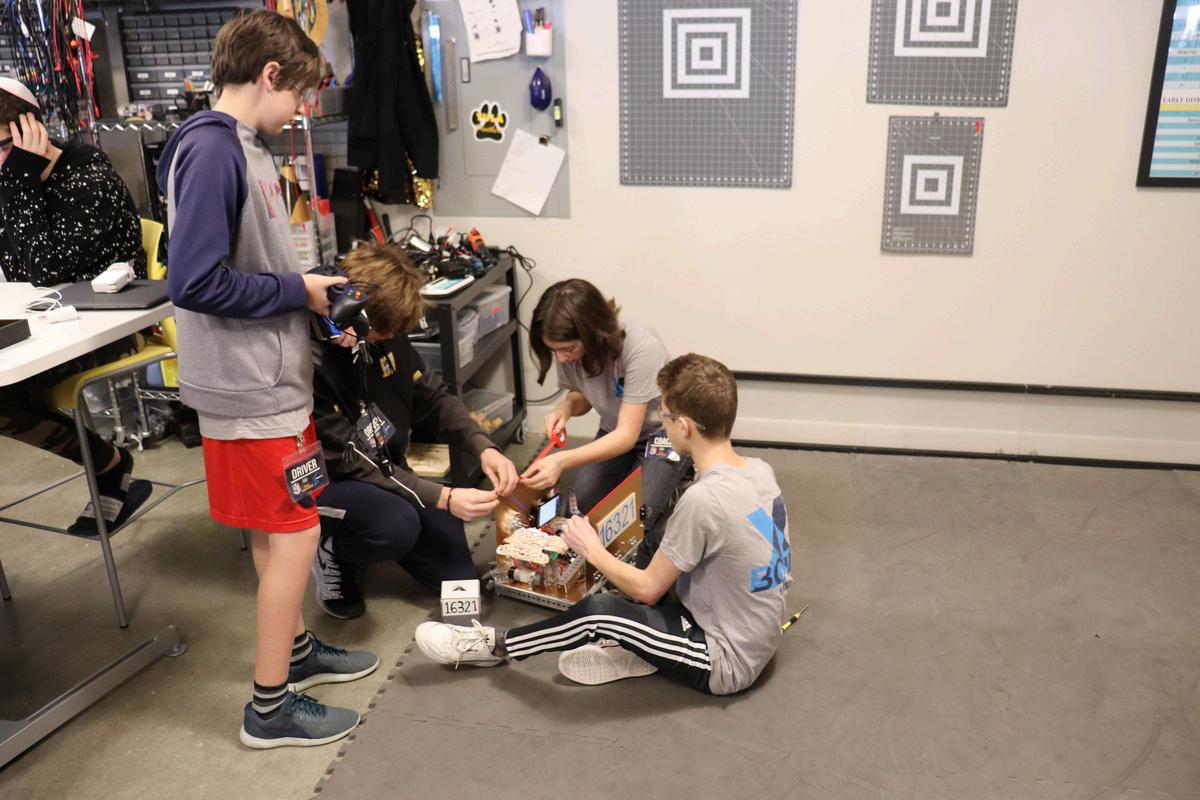
This course offers a hands-on exploration of various hand-building techniques within ceramics Teachers show students how to work through the ceramics process from creation to glazing and firing their pieces. Emphasis is placed on mastering techniques such as pinch pots, coil building and slab-making. Students have opportunities to learn various design principles and surface design techniques while exploring cultural contexts.
This course is an introduction to the fundamentals of image making through photographic practices. Students develop skills in both traditional and digital photography while focusing on camera functions and foundations Teachers introduce students to traditional photographic concepts in the darkroom with photograms and pinhole cameras while they examine historical and contemporary artwork in connection to their own projects. Later in the term, students explore shooting techniques with 35mm cameras. This course also examines photography’s role as a cultural phenomenon and tool for documentation, representation and self-expression.
This class is an in-depth continuation of seventh grade Studio Art. Teachers introduce students to the principles of drawing, painting and design, providing classical art training to help students form a strong foundation and scaffolding for advanced work in Upper School studio art courses.
Students develop art portfolios and are assessed with the following criteria in mind: focus; concentration; willingness to take creative risks; degree of improvement; ability to set high standards and nurture self-critiques; willingness to re-work projects and make improvements; openness to new ideas and techniques; participation in classroom peer-topeer critiques; degrees of craftsmanship; and an understanding of art materials and safety.

This course introduces students to the art form of film, with an emphasis on critical analysis, cinematic technique and writing reviews. The class provides opportunities to watch and discuss classic films such as “Star Wars,” “The Kid,” “Rear Window” and “E.T.”
From silent to animated films, teachers introduce students to the complete filmmaking process. In addition to learning about the techniques of lighting, sound, camera angles and editing, students study narrative structure and how to identify major themes.
This class introduces students to the fundamentals of video production and film language. Working with digital cameras and iMovie, students engage in hands-on experiences as they learn the basics of filmmaking including pre-production, production and post-production.
Students participate in every aspect of video production, from screenwriting to editing, as they develop skills in planning, organization, script writing, interpersonal communication, team building and media literacy. Instructors place special emphasis on cultivating creativity as students work in collaborative groups to make movies in the following forms: narrative/dramatic, non-fiction/documentary and experimental/music video.
As a culminating event, films produced in Video Production are featured in a special end-ofthe-year screening.

Students in this course dive into the creative process of building a full yearbook from scratch, guided by the instructor. This team, comprising only eighth grade students, is the only group of Middle Schoolers granted the privilege to create a professionally printed book holding both personal and collective Crossroads Middle School memories for years to come. This arts block is unique in that it is a yearlong commitment, affording students more time to immerse themselves in a long-term project, leading to an even more rewarding payoff. For these reasons, yearbook students are required to remain committed to the course on their schedule for the full year.
Digital Art & Animation introduces students to artmaking using digital tools. Students use Photoshop, Adobe Animate, digital cameras, scanners, apps and other image-making technology to create fun and expressive works through digital illustration, collage, image manipulation and animation.
This course is the Middle School counterpart of the Graphic Design & Animation art track in the Upper School.
